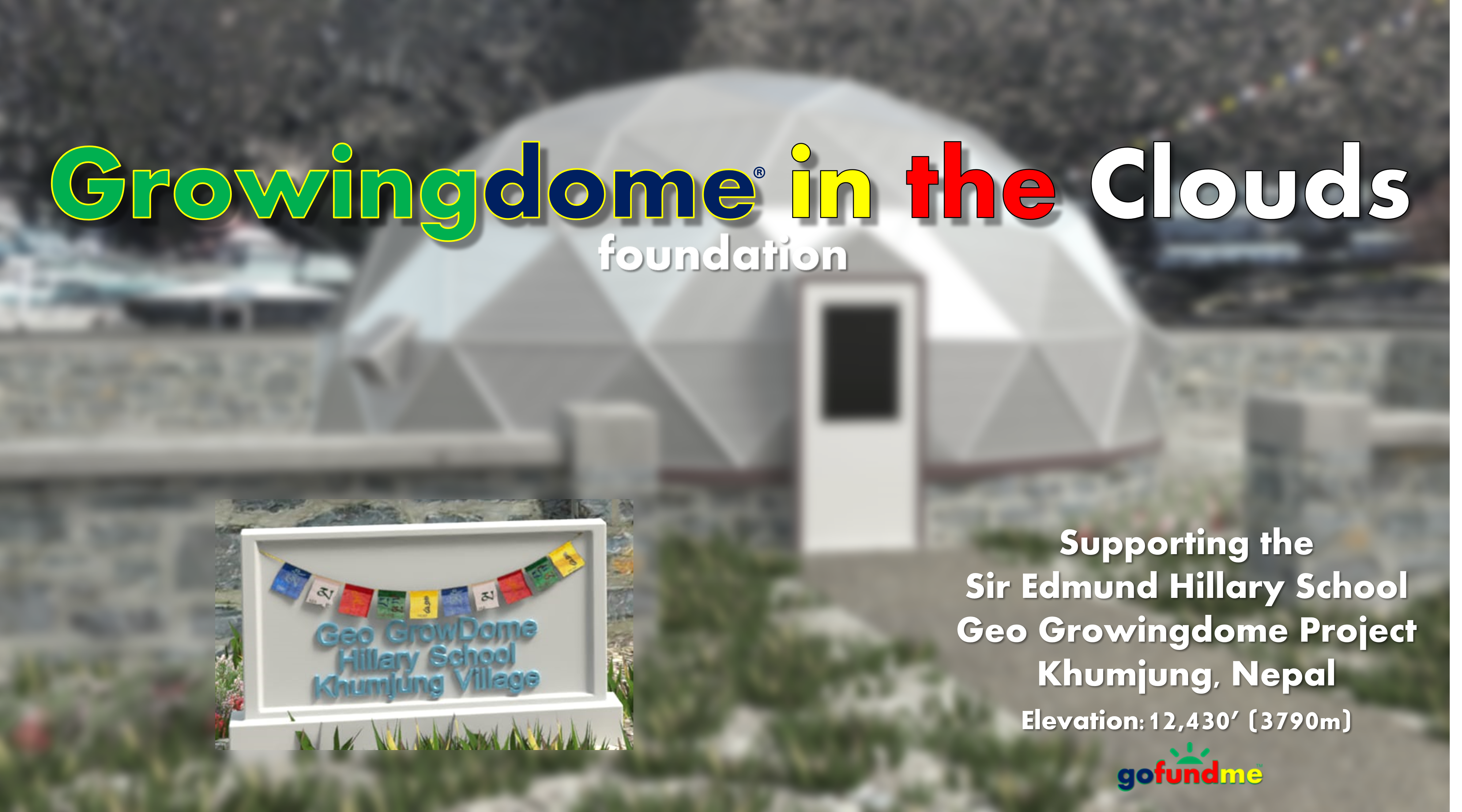Welcome-----
Namaste
-----Tashe Delek
While on top of Everest, I looked across the valley… even though I was standing on top of the world, it wasn’t the end… I was still looking beyond to other challenges. – Sir Edmund Hillary

About 12 miles from the tallest mountain on earth, the villages of Khumjung and Khunde rest at 12,400′ just over the high ridge to the left. Mt. Everest, known as Chomolungma; Mother Goddess of the World, to the Tibetan people, rises 29,035′ into the clouds. The tips of the prayer flags point the way to the summit along the south face. Lhotse, the world’s 4th tallest peak, stands as her sentinel, 27,940′ in the clear, above the pine tops.
Welcome to the high Himalaya where Ama Dablam extols the spirit of the valley below with open arms.
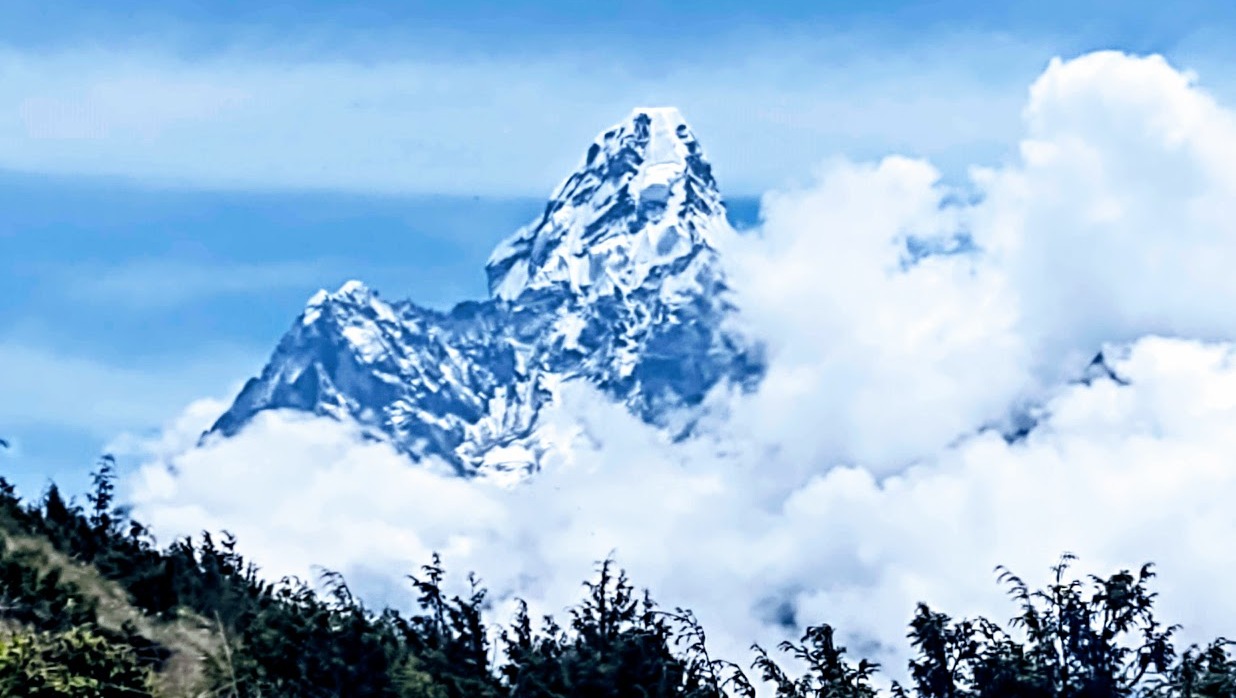
Over 60 years ago, in this sacred Khumbu Valley, Sir Edmund Hillary listened heartfully to the words spoken to him by a Sherpa elder:
We would like our children to go to school, sahib! Of all the things you have, learning is the one we most desire. With all respect, sahib, we know you have little to teach us in strength and toughness. We do not envy you your restless spirits – perhaps we are happier and more content than you are? But knowledge for our children – that we would like to see!
-Schoolhouse in the clouds. Hillary, 1964.
Along with his team of intrepid mountaineers who were experienced in dealing with the improbable, they transported a 40′ x 20′ aluminum, two-room schoolhouse from almost 10,000′ below, and fabricated what would be just the first of many schoolhouses across the indigenous mountain villages of the Himalaya. Truly, they left behind portals of progress for all of us.
So Now…
A bold, new challenge has been put forth today, by the current principal of that very first Hillary School in Khumjung Village: If we only had a greenhouse… to grow all year around… We could better nourish our staff, students and community… We could better serve many.
So Now… it’s our turn… to tread in the very footholds left by Hillary and his climbing partner Tenzing and respond with the same spirit and fortitude.
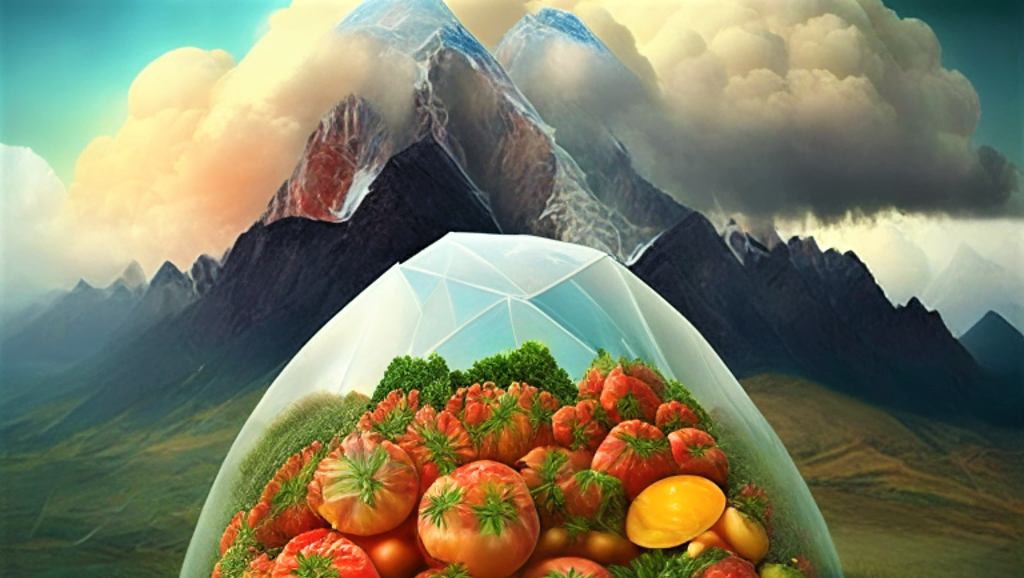
Join our Team in this epic ascent to bring the first, eco-friendly, year-around Geodesic Growing Dome to Principal Rai and into the clouds of Everest. Like the first schoolhouse in the clouds, the initial 42′ Dome will allow for culturally-sensitive, community-driven, indigenously intelligent initiatives, including high-altitude, sustainable-regenerative agriculture, bio-diversity, health, nutrition, waste-management practices and economic opportunity. We intend to raise $250,000 to support this 2-year mission and benefit thousands.
Take a sneak-‘peak’ at just how we’re going to get Principal Rai’s Growingdome to the school, all the way from the mountains of Colorado…
Introduction
In 1961, Sir Edmund Hillary built the first schoolhouse in the clouds for the community that desired to provide precious, uplifting education for its children. I’m fortunate to have come across an old copy signed by Sir Ed himself. Principal Rai was kind enough to add his name similarly during our first meeting! I was honored to share with him my copy of Black Elk Speaks, about the Lakota healer and visionary from whom we adopted the mantra hoka hay!… to keep moving forward! We also discussed some fascinating studies regarding potential ancestral origins and genetic history linking Tibetan Highlanders and Native North Americans and like the Lakota.
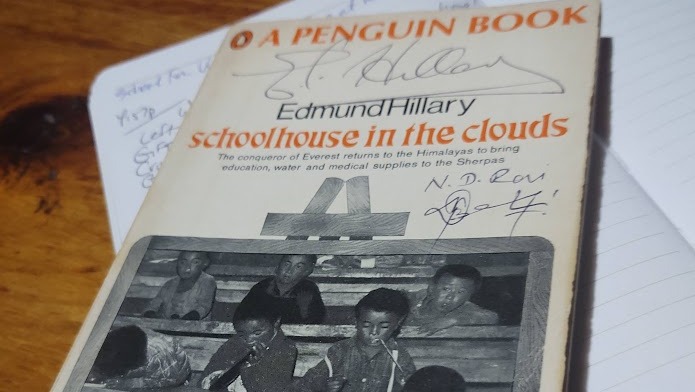
Hillary and his team were indebted to the Sherpa people for their endurance, loyalty and friendships developed and so critical to enabling the first successful summit of Everest by himself and Tibetan Tenzing Norgay in May of 1953.
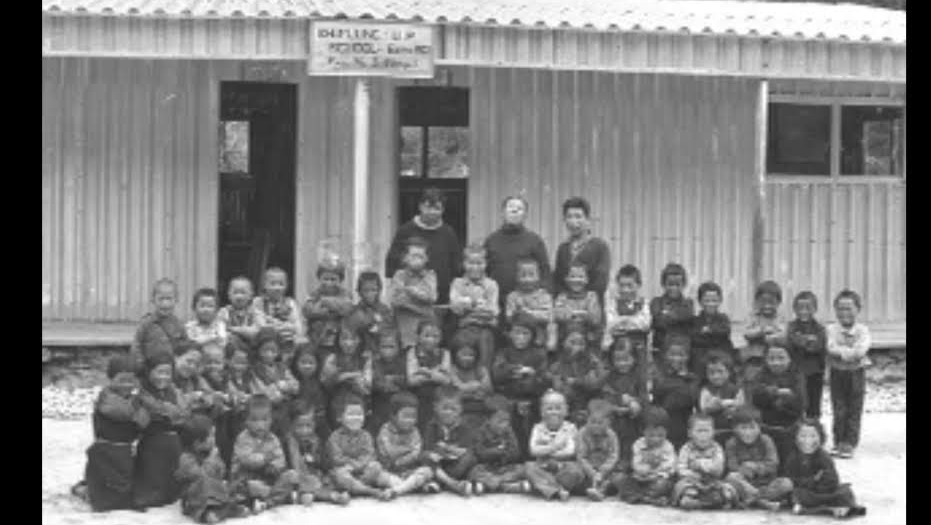
-Looking down into Khumjung and the contemporary Hillary School Campus (foreground):
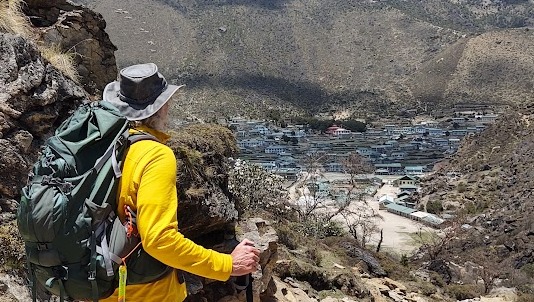
-In the office of the Principal of the Hillary School:
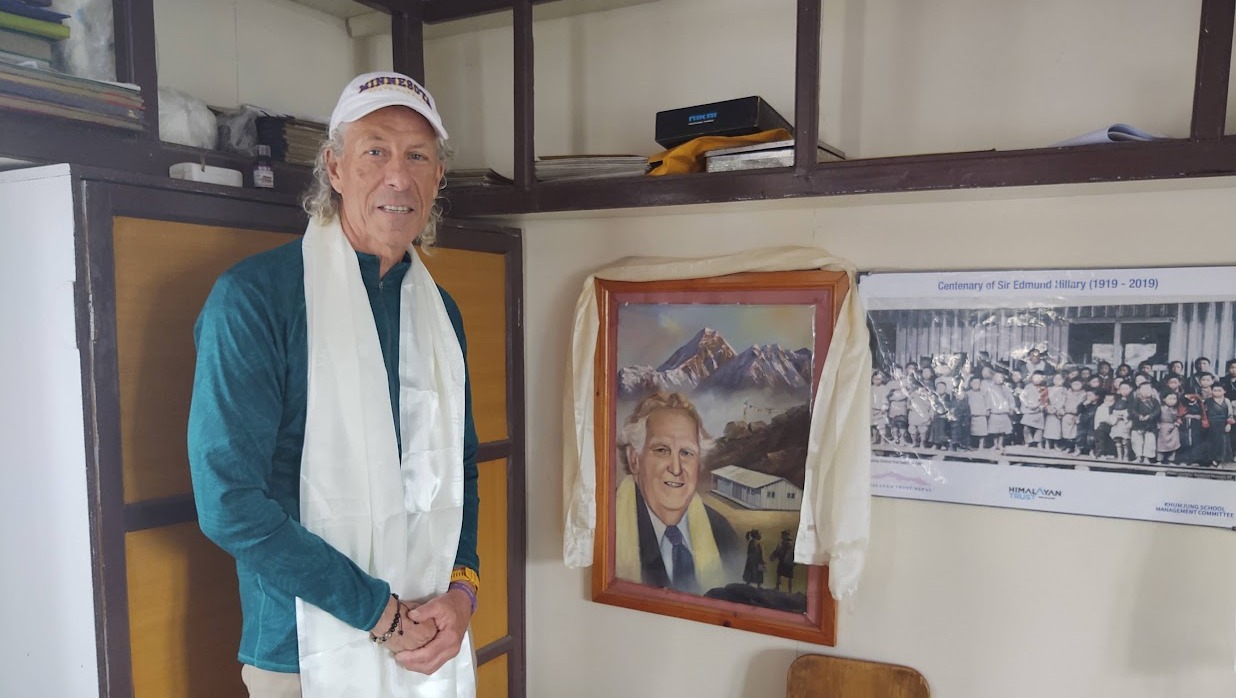
I don’t know if I particularly want to be remembered for anything. I have great satisfaction from my climb of Everest and my trips to the poles. But there’s no doubt, either, that my most worthwhile things have been the building of schools and medical clinics. -Sir Edmund Hillary
The Genesis If I had a greenhouse… I could keep my teachers longer… more likely they would stay up here. If there was more variety of vegetables, less expensive for our student hostel… It’s a challenge for us to compete for teachers with the down-valley schools… – N.D. Rai., Principal of the Hillary School, Khumjung Village, Solukhumbu, Nepal. (Shared with me, in June 2022, during my ethnographic studies in Nepal’s Khumbu Valley and graduate work in cultural anthropology.)
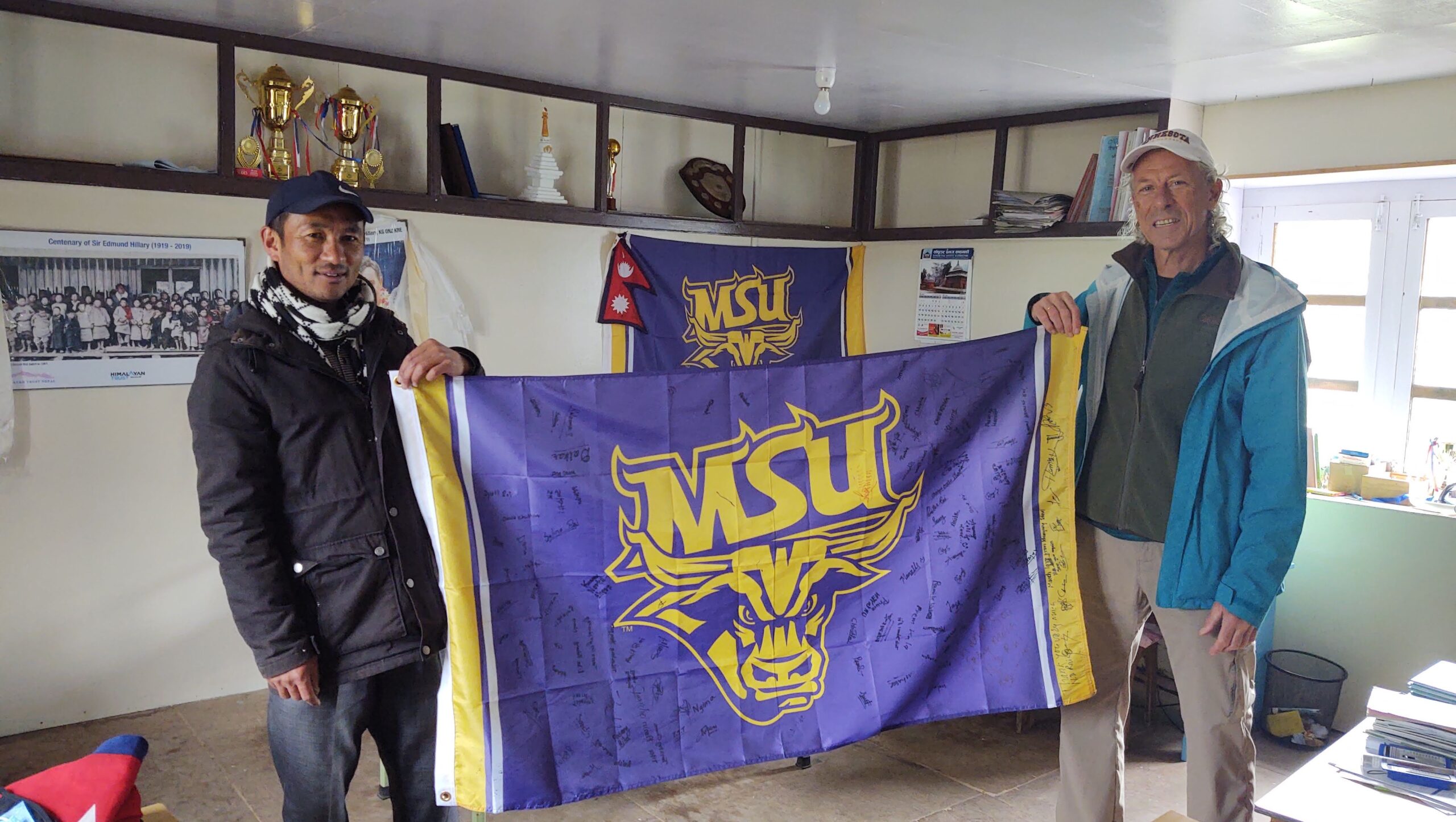
The school operation is an incredible combination of love, dedication, discipline and fortitude. From the morning cleaning activities through the motivational assembly to the energy-filled classrooms with 250 students ranging from pre-school through 10th grade, observers leave with an overwhelming sense of appreciation for these authentic, committed young people, and 22 staff, showing up to make a difference. Make no doubt about Principal Rai setting the tone and driving this school toward its goal of adding 11th and 12 grades in the near future and striving to be the best mountain school in Nepal!
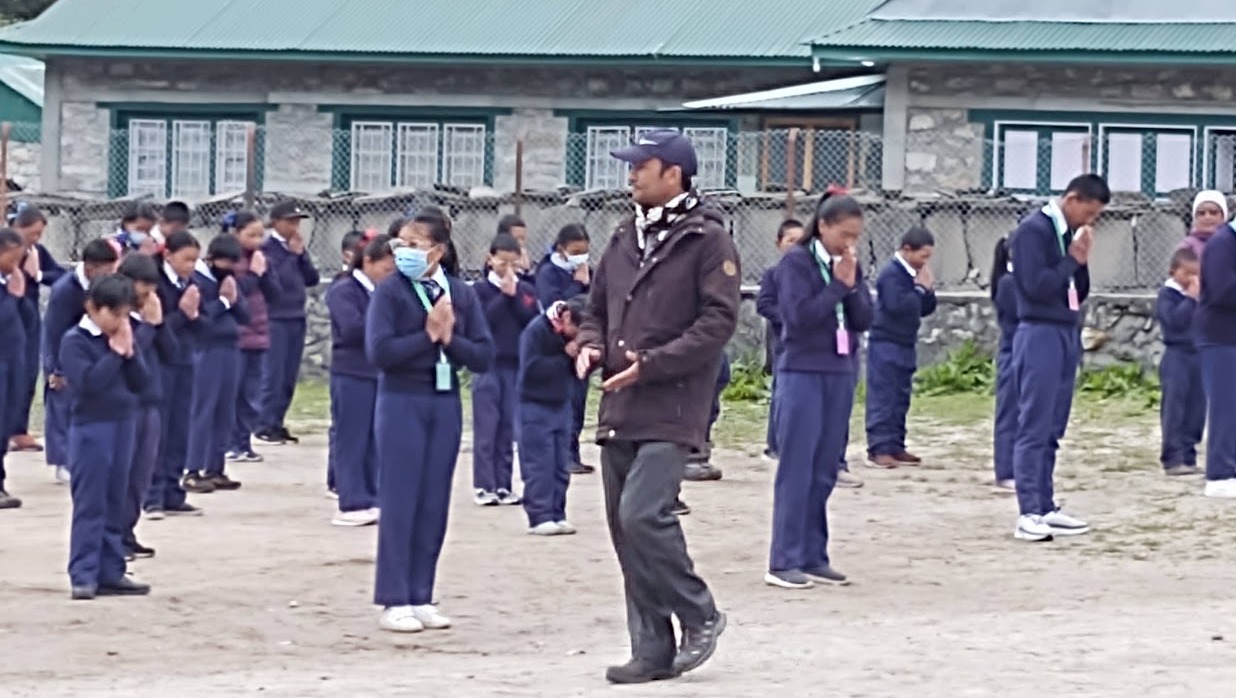
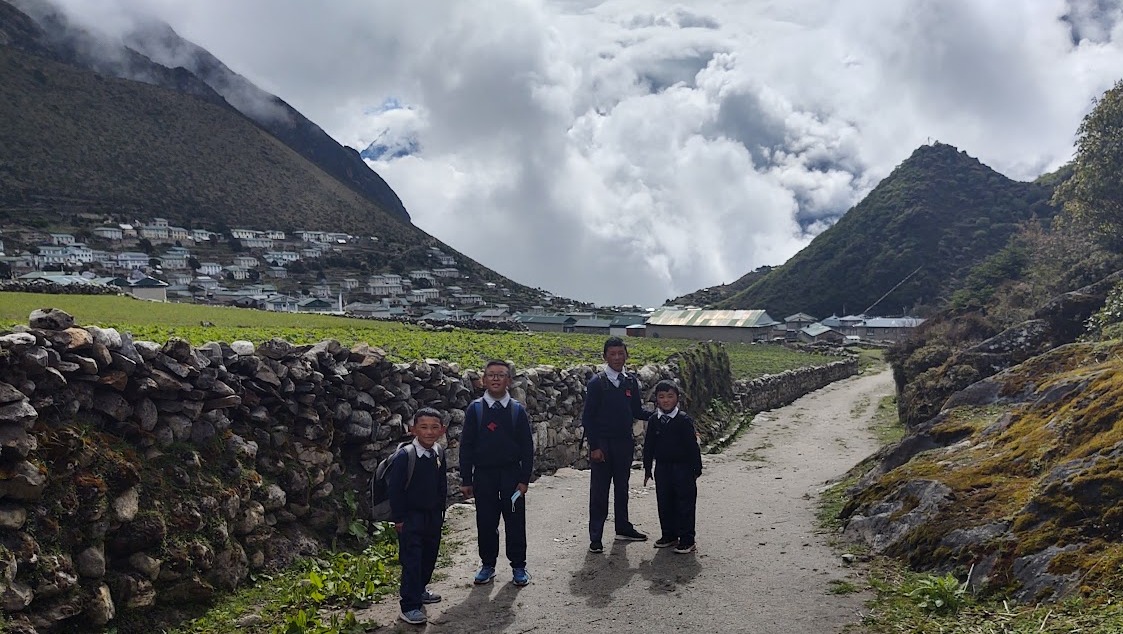
There are not too many villages on earth where looking down draws your gaze right into the clouds! Students attend school six days a week from hours away in each direction. Running up and down and over the trails replete with backpacks and smiles and ready to practice their English greetings. The young seem to be born with the same gift of laughter as their parents.
Regarding the state of agriculture and produce yielded from this high-altitude, ancient lake bed, and its surrounding villages, it’s pretty simple… Lots of potato fields. Great tasting potatoes and a variety of species, but not a whole lot of much else… Households may grow some leafy greens, radishes, buckwheat, and a few tomatoes, or try corn, melons and onions but with sketchy results. The growing season is 100 days +/-. Every three or four years there’s a bad potato crop. They eat and sell from the prior year’s harvest, which they store underground. No roads here, nor for miles around. All supplies and foodstuffs come up the trail on the back of man, woman or beast of burden. Occasionally, helicopters make deliveries and of course, this adds a great expense to these goods.
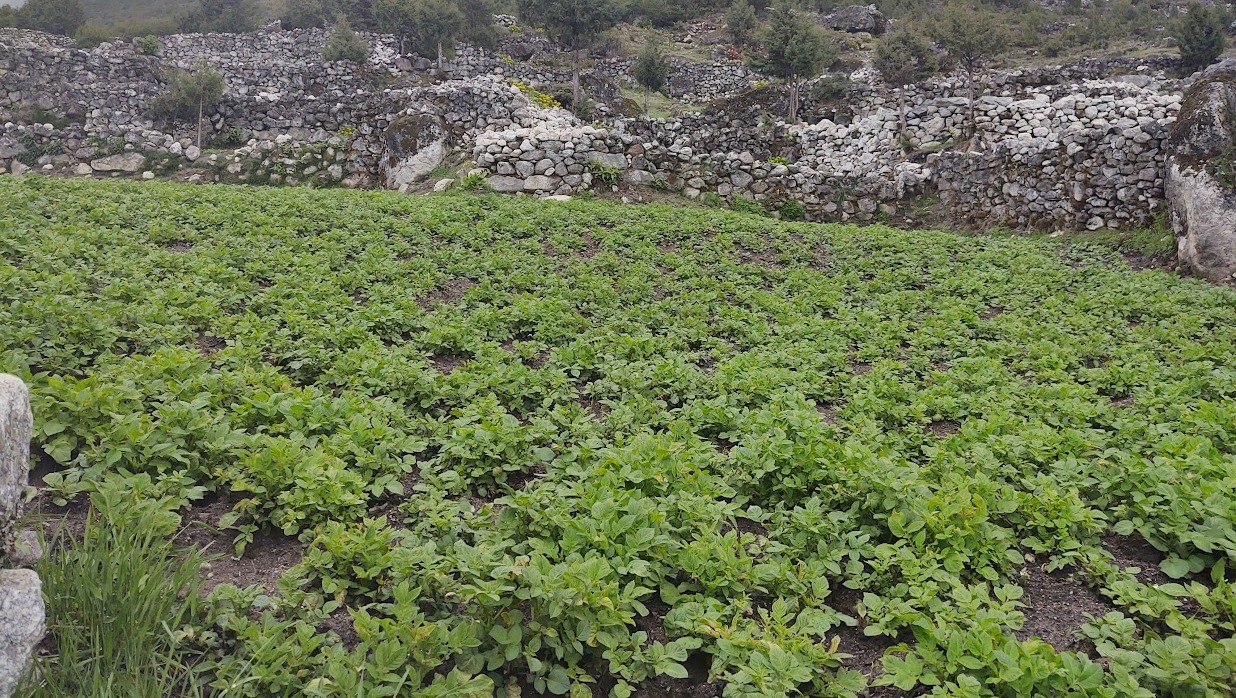

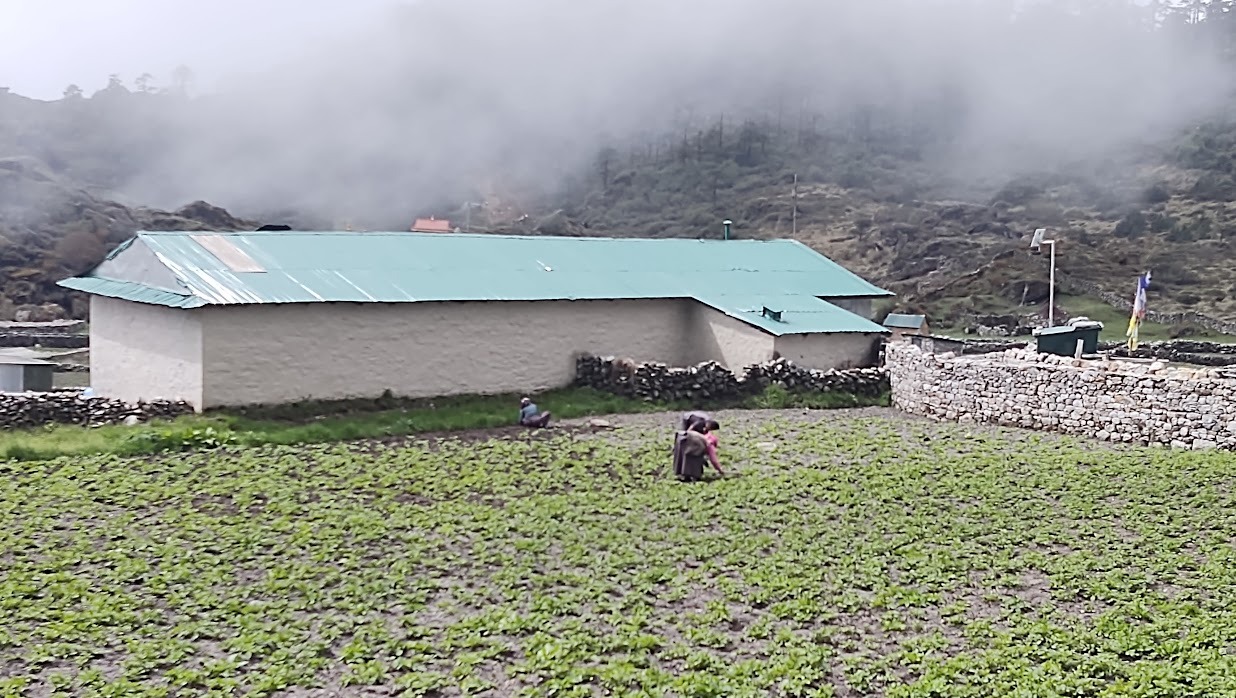
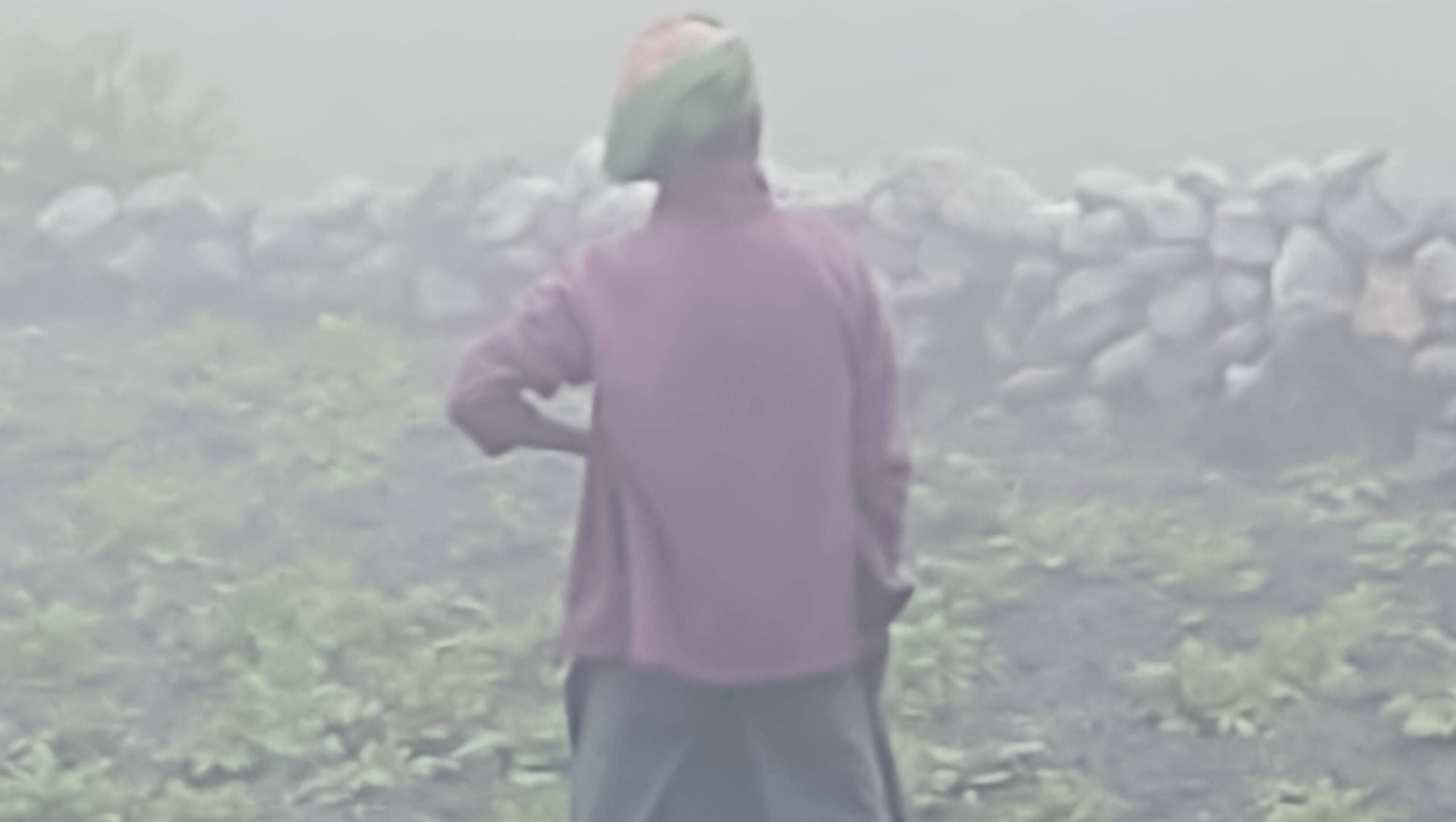
The Down-valley environment accommodates a much greater variety of produce, utilizing raised planter beds and in-ground farming. The elevation of the plot in the photo below is 4000′ lower than Khumjung and is near Lukla along the Dudh Koshi river valley. With a standard temperature lapse rate, that can easily make for a 12-15 degree air differential.
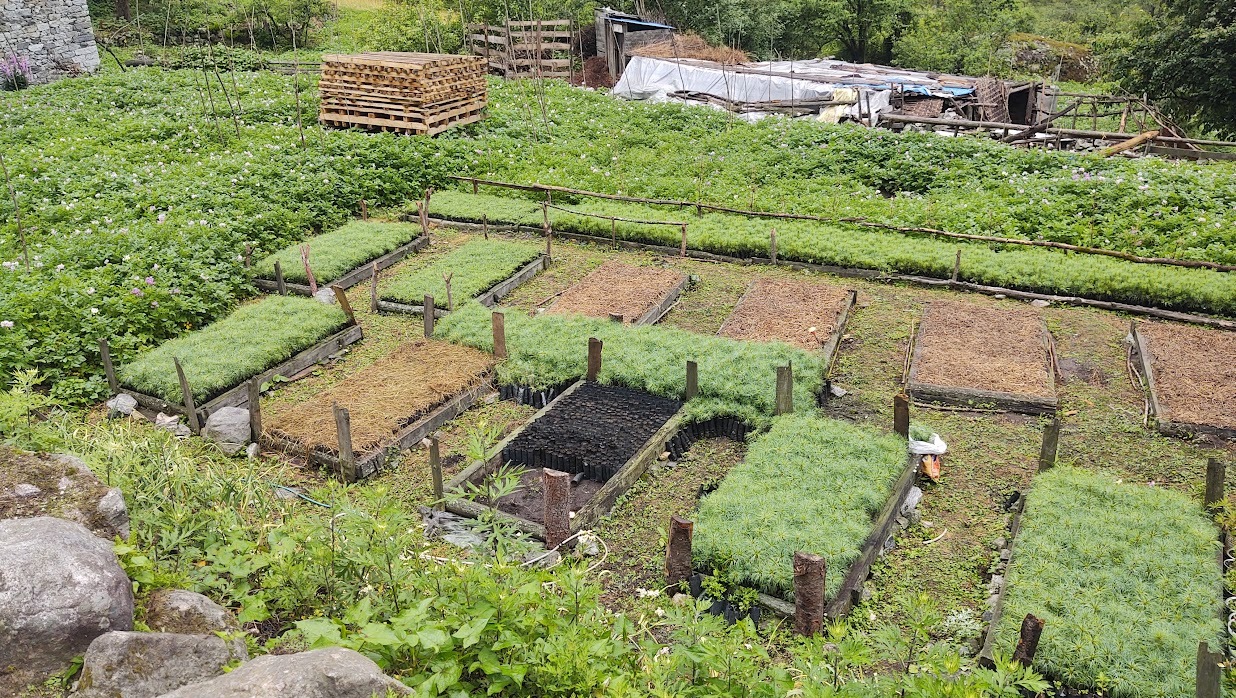
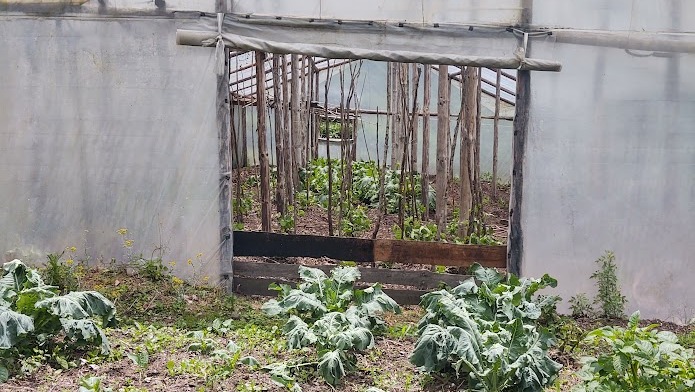
Shown is a rudimentary plastic-sheeting greenhouse or chapro, often used for tomatoes, corn and cauliflower at the lower elevations where the growing season is already a month longer than up in Khumjung.
– Gary Lesley – As an aviator, former flight instructor, experienced entrepreneur and innovator, I’ve founded and operated several businesses over a 30-year period that ranged from making people more visible at night, with clients like NIKE, Federal Express and the U.S. Capitol Police, to modular, quick-releasable body armor for all branches of the Armed Forces. I was also engaged in the first efforts with biotech to commercialize biomimetic spider silk for mind-blowing medical and protective fabric applications. I know game-changers when I see them. And I’ve been fortunate to execute a couple.
At the edge of the Khumbu ice field near Mt. Everest. (2021)
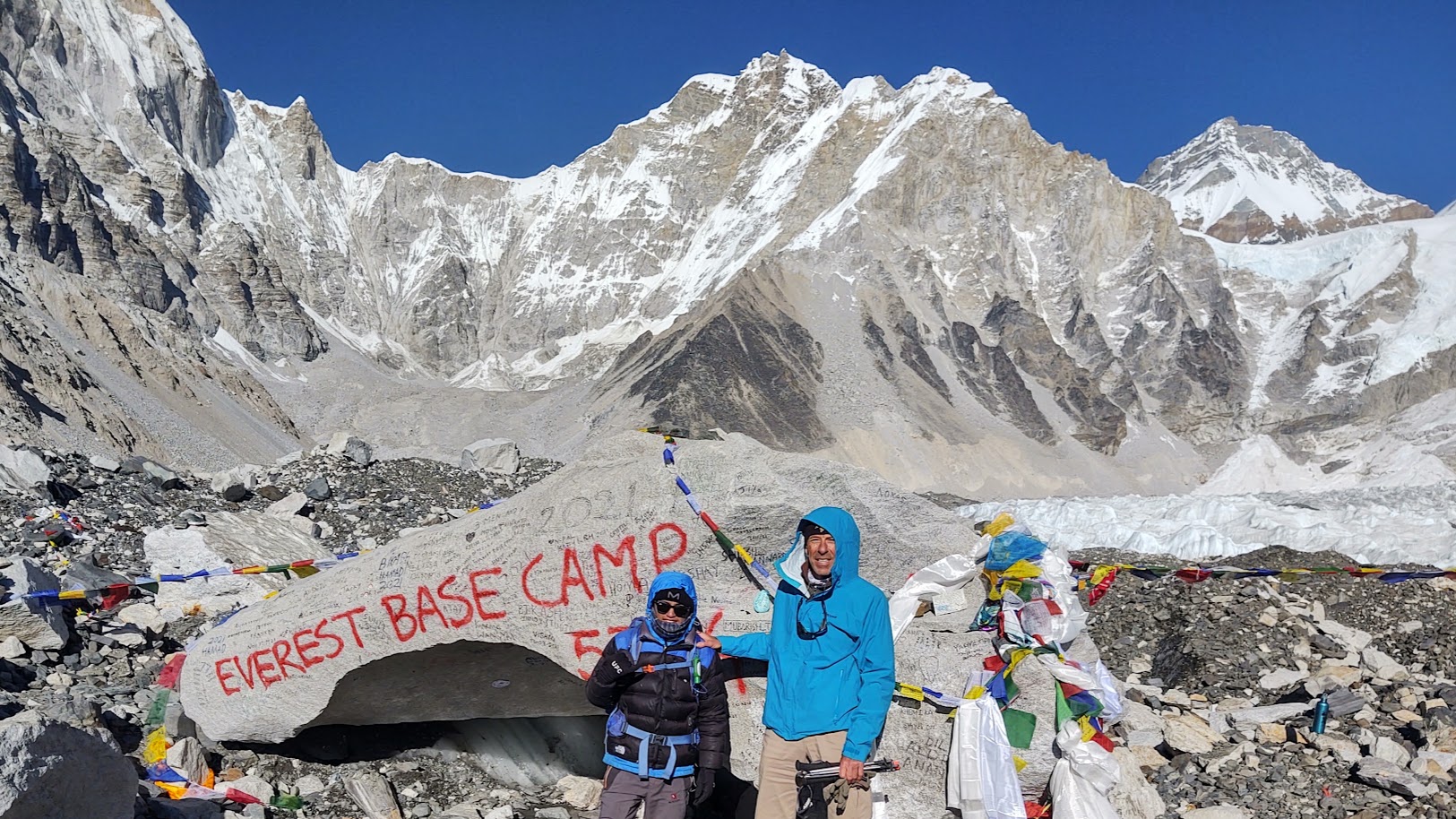
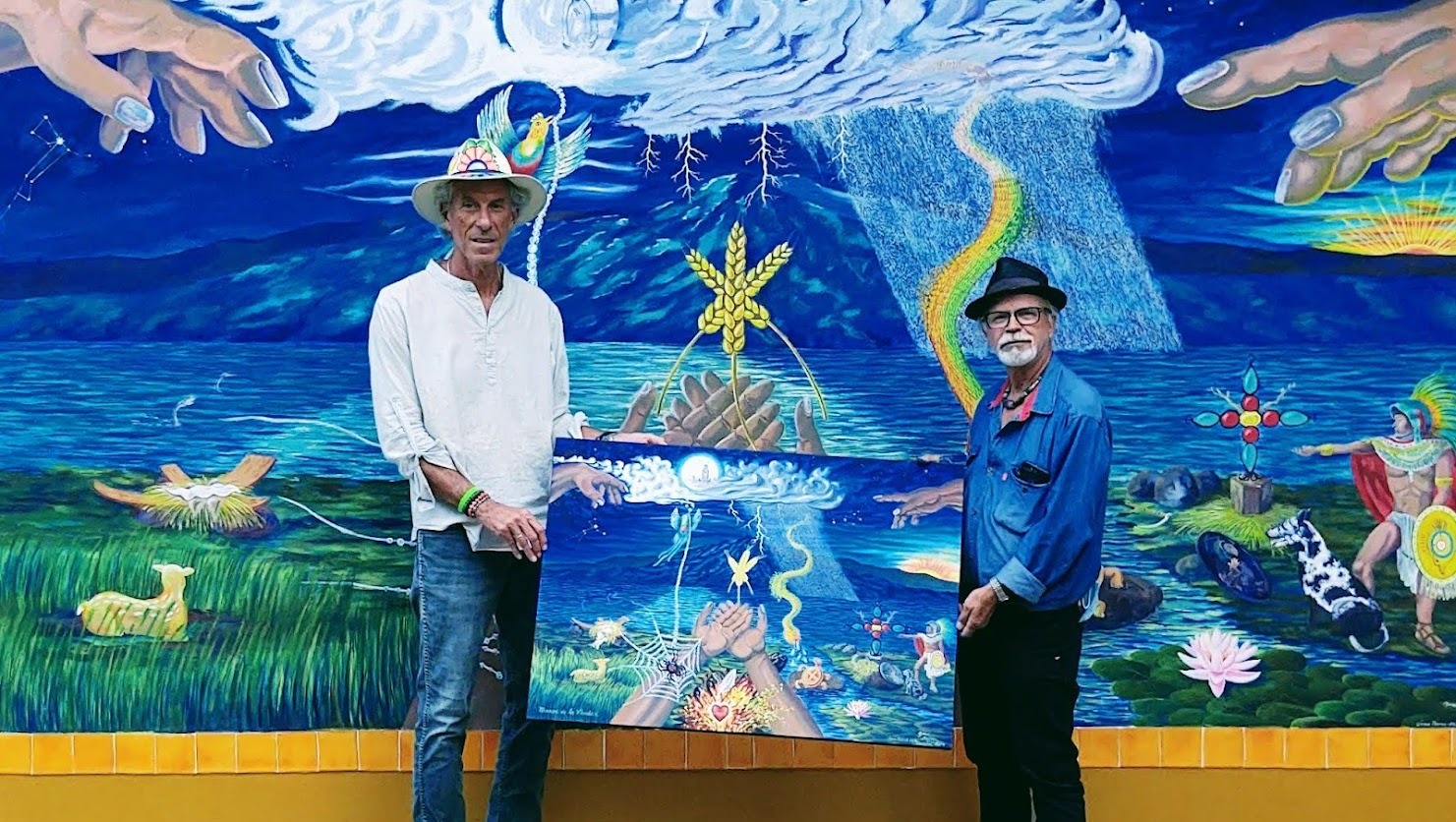
After a contemplative, 18 month sabbatical in Mexico, followed by a mythical-magical trek up to base camp at Mt. Everest, I returned in the Fall of 2021 to my alma mater; Minnesota State University in Mankato, to join an Innovation-in-Agriculture initiative with the College of Business. I also began graduate studies in a field I’d long held a passion for; Anthropology. And that passion and desire to study the resilience and adaptability of the Sherpa culture of the Khumbu Valley motivated me to return and immerse myself into the community of Khumjung Village; the home of the inspirational Schoolhouse in the cloud. From that very school, I humbly accepted an assignment from Principal Rai, as his student, to research the challenge he faced and report back.
—–
-It looks like fog… but it’s not. You live in the clouds here. Frequently. In this photo taken from my room at the Valley View Lodge, you see why the Hillary School is referred to as schoolhouse in the clouds… It’s in there, trust me. One time I attempted to return from the school back to the VV in those conditions. I could barely see my feet. Fortunately, the men working a power saw on some lumber just below the lodge allowed me to use my ears more than my eyes. A good exercise in faith and trust. And common sense; something that’s still refreshingly abundant here.
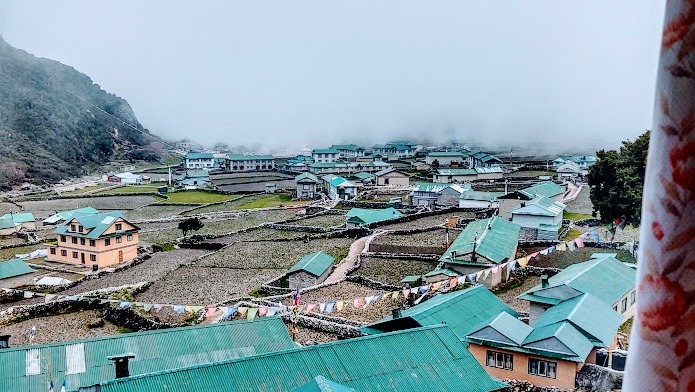

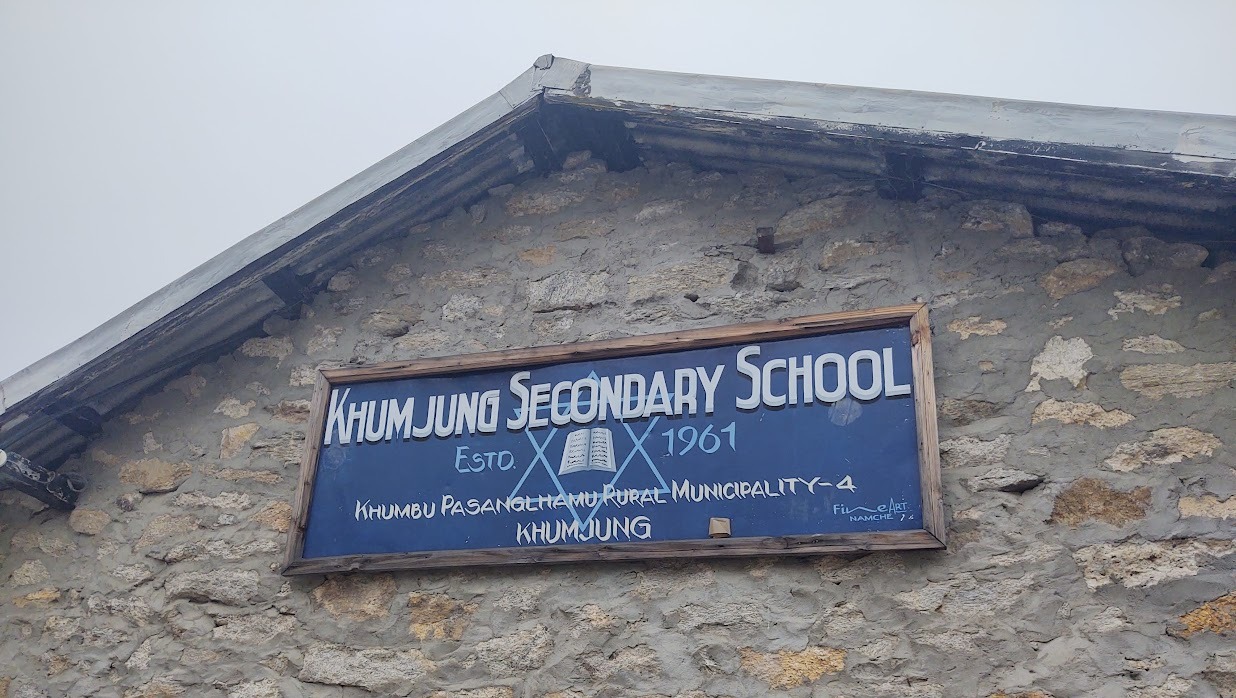
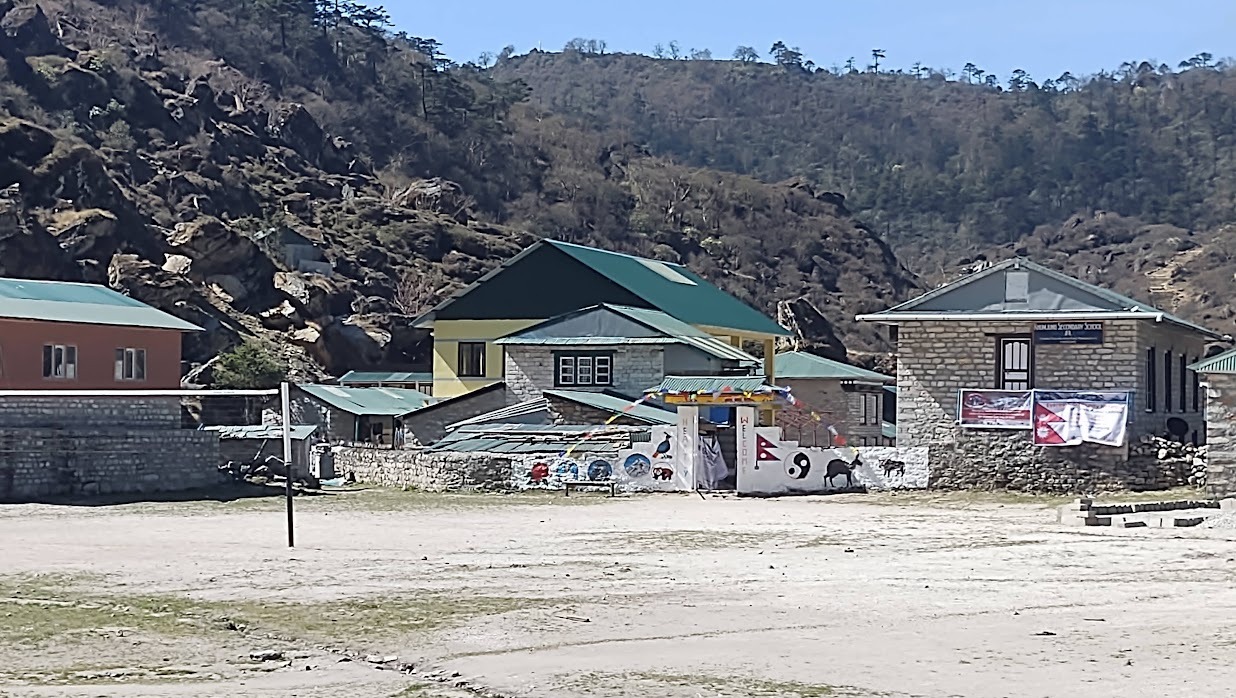
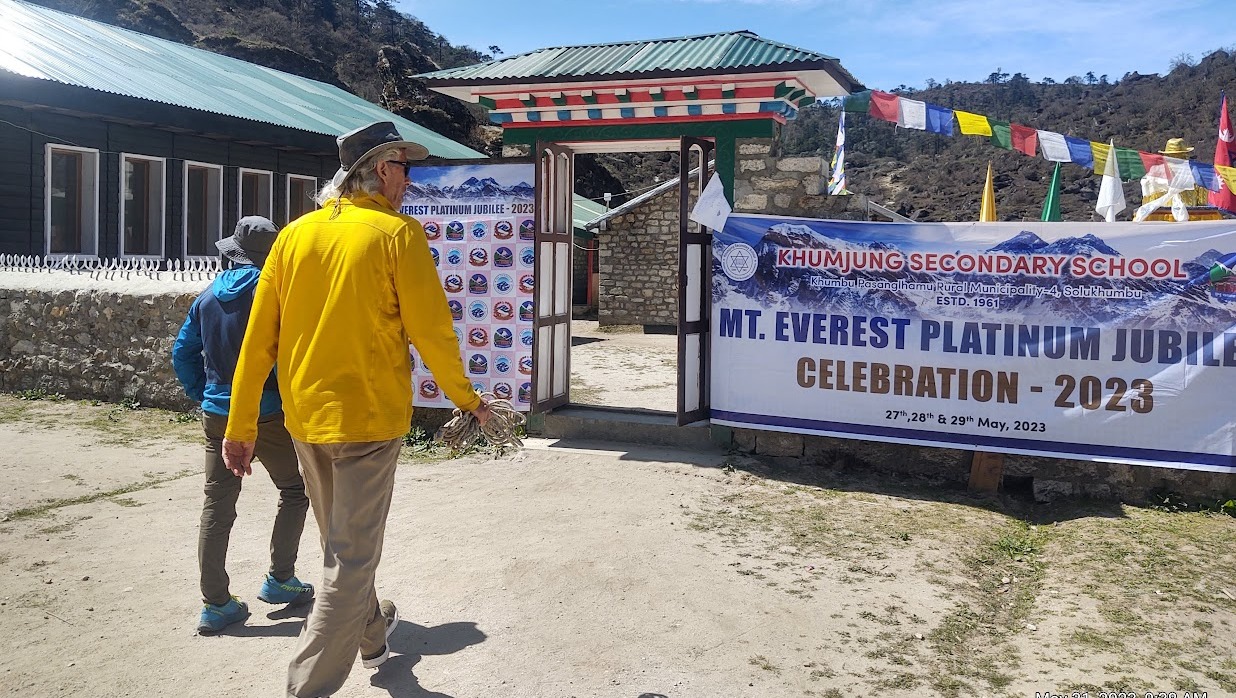

Today, the Hillary School campus is comprised of several classrooms, a hostel and teachers’ quarters. The original aluminum schoolhouse has been converted into a wonderful Visitor Centre. Having just opened, It was my distinct honor to be the first signer in the Guest Book.
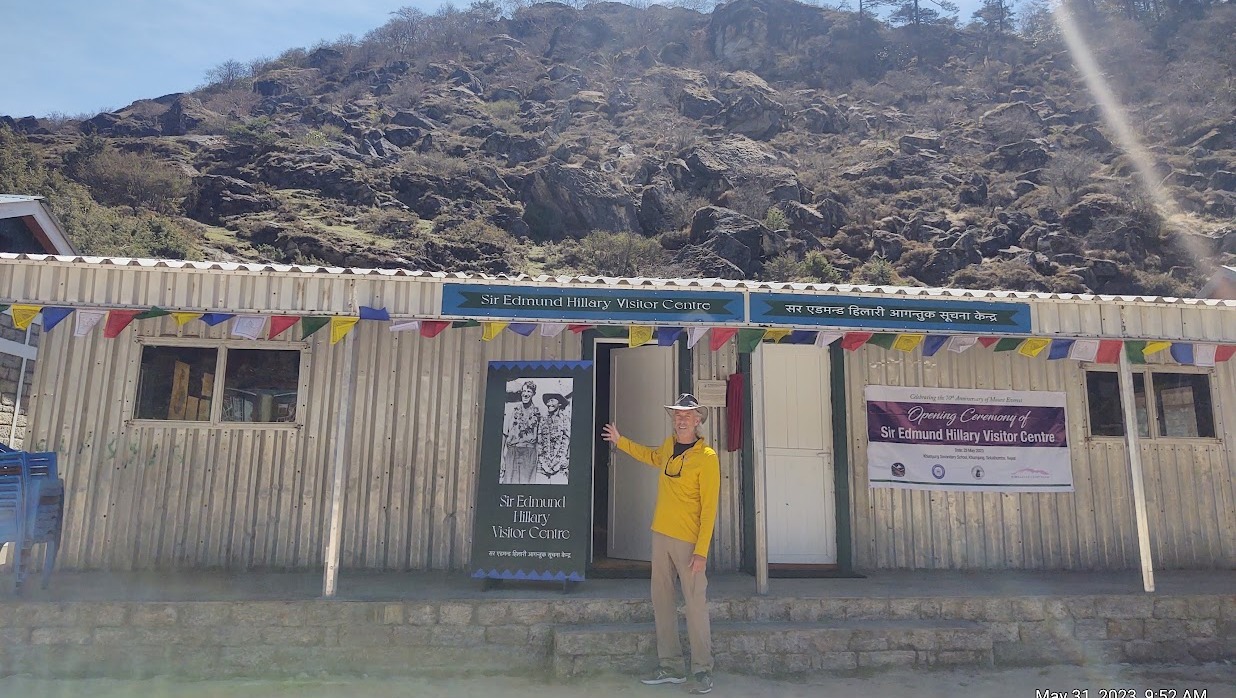
So what did I discover from my research? Yes… It’s Possible.
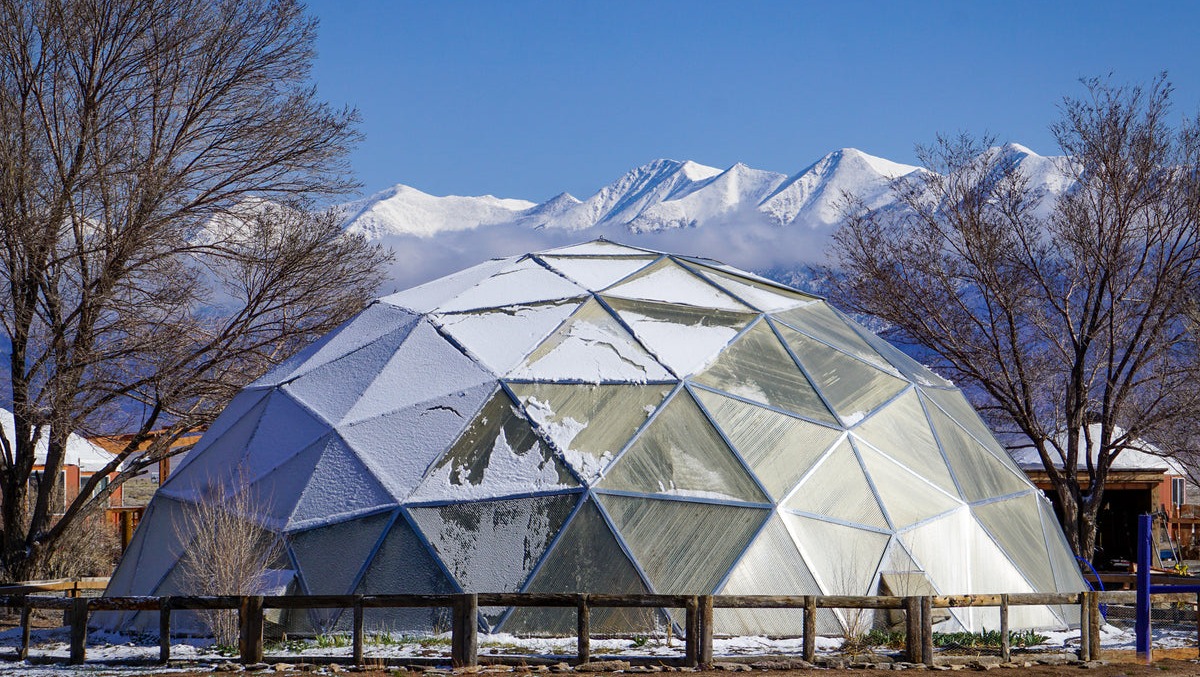

Inhabitants on Mars are going to yield a variety of produce amidst its harsh, hostile climes. People have to eat. We can do the same in the rarified air of the great Goddess-Mother Chomolungma (Mt. Everest). All year round… With a brilliant mix of indigenous knowledge, wisdom and next-generation technology.
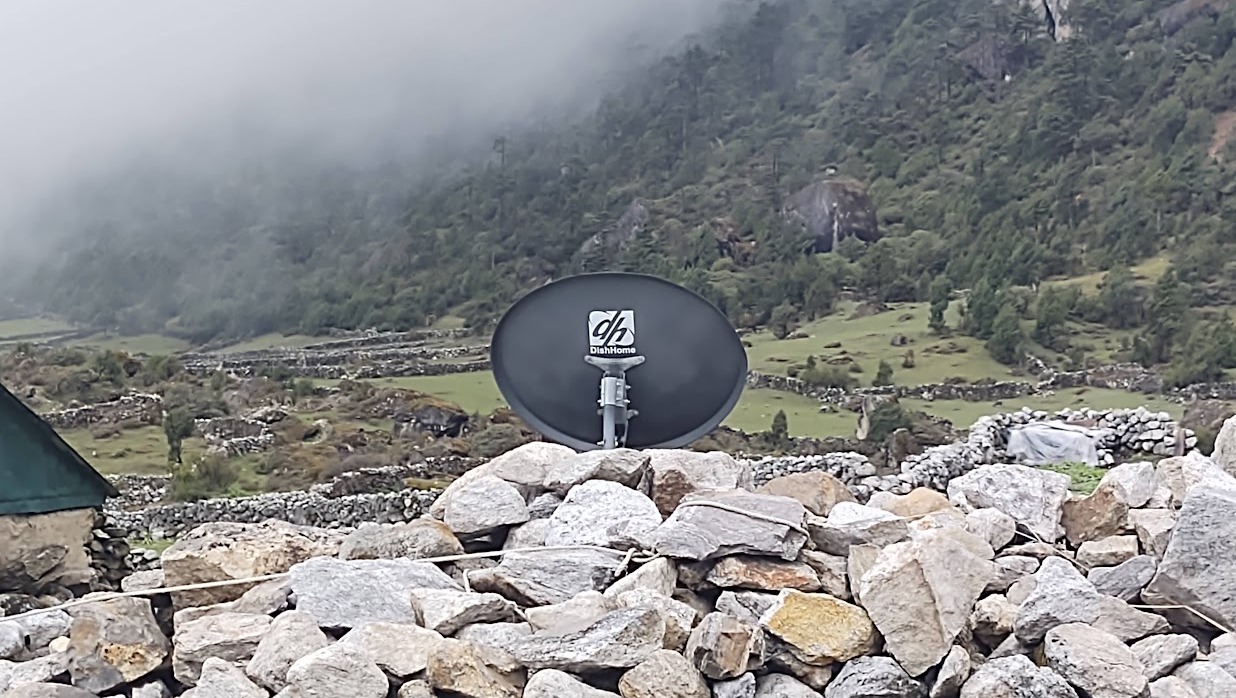
A note on the rapid pace of modernization, globalization and effects of technology in the Khumbu Valley, the subject of my studies
Many of the youth of Khumjung can be spotted with iPhones. Internet service is high-speed and it is common for many Sherpa families to face-time members living in Kathmandu or Toronto or Denver. Every night. Connectivity is connectivity. From sun-up to sun-down, the pervasive thump-thump-thump of helicopters flying in and out of the deep, adjoining valleys is now a part of the backdrop and soundscape between Everest and Lukla and beyond. Third grade students can draw a helicopter more easily than a yeti. The topic is as complex as it is elementary; like the changeover Khumjung and other villages went through in the ’70s and ’80s. –From leaky wooden and stone slab roofs to corrugated tin and skylights. Sherpa locals often wonder why the trekkers and tourists have disdain for such progress. Do they really think we should live under a leaky roof to keep our culture? From Gaiety of Spirit, The Sherpas of Everest by Frances Klatzel, 2009.
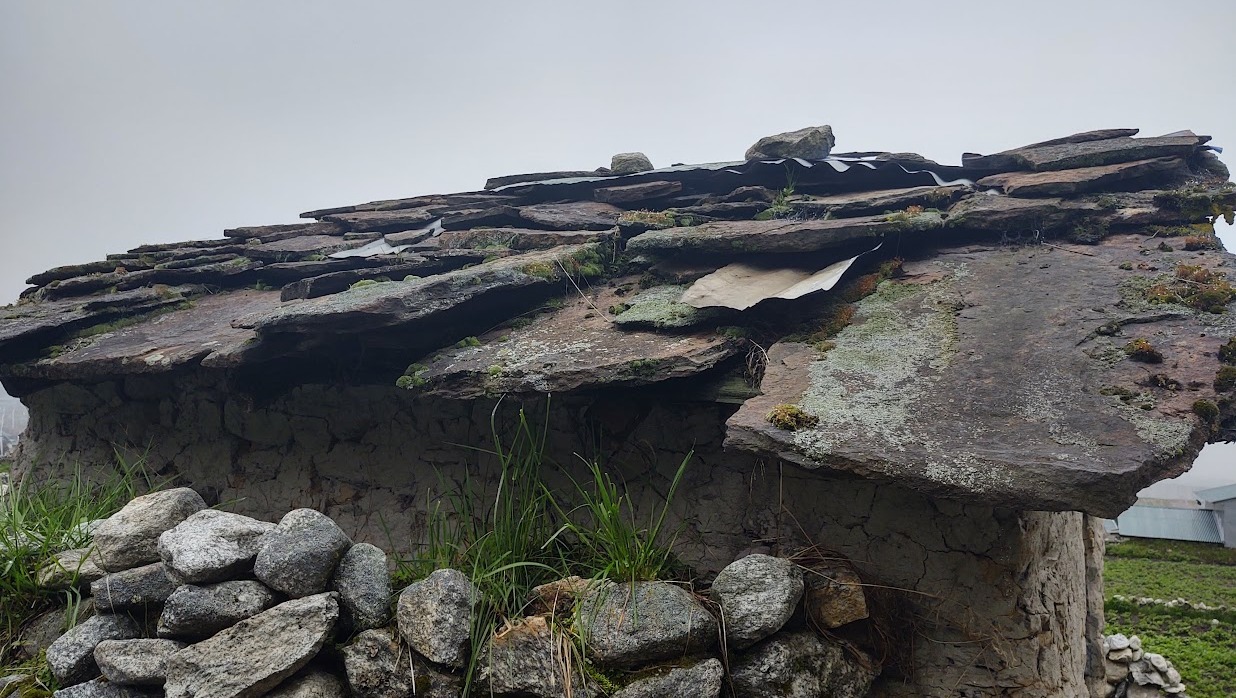
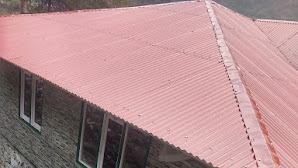
The Nexus
Next-generation Growing Space Technologies now allow for energy-efficient, off-grid possibilities to effectively extend growing seasons and present opportunities for otherwise unavailable varieties of fruits and vegetables to be harvested in a sustainable, regenerative manner, even in extreme, high-altitude environments. Mr. Principal: Yes, it’s possible. And here’s the exciting part…

Funds will also provide the necessary resources and expertise to bring the Growingdome to Life! So after it’s built, with the soil and the seed, it will be ready to grow and feed… and wildly succeed! Go ahead, step inside…

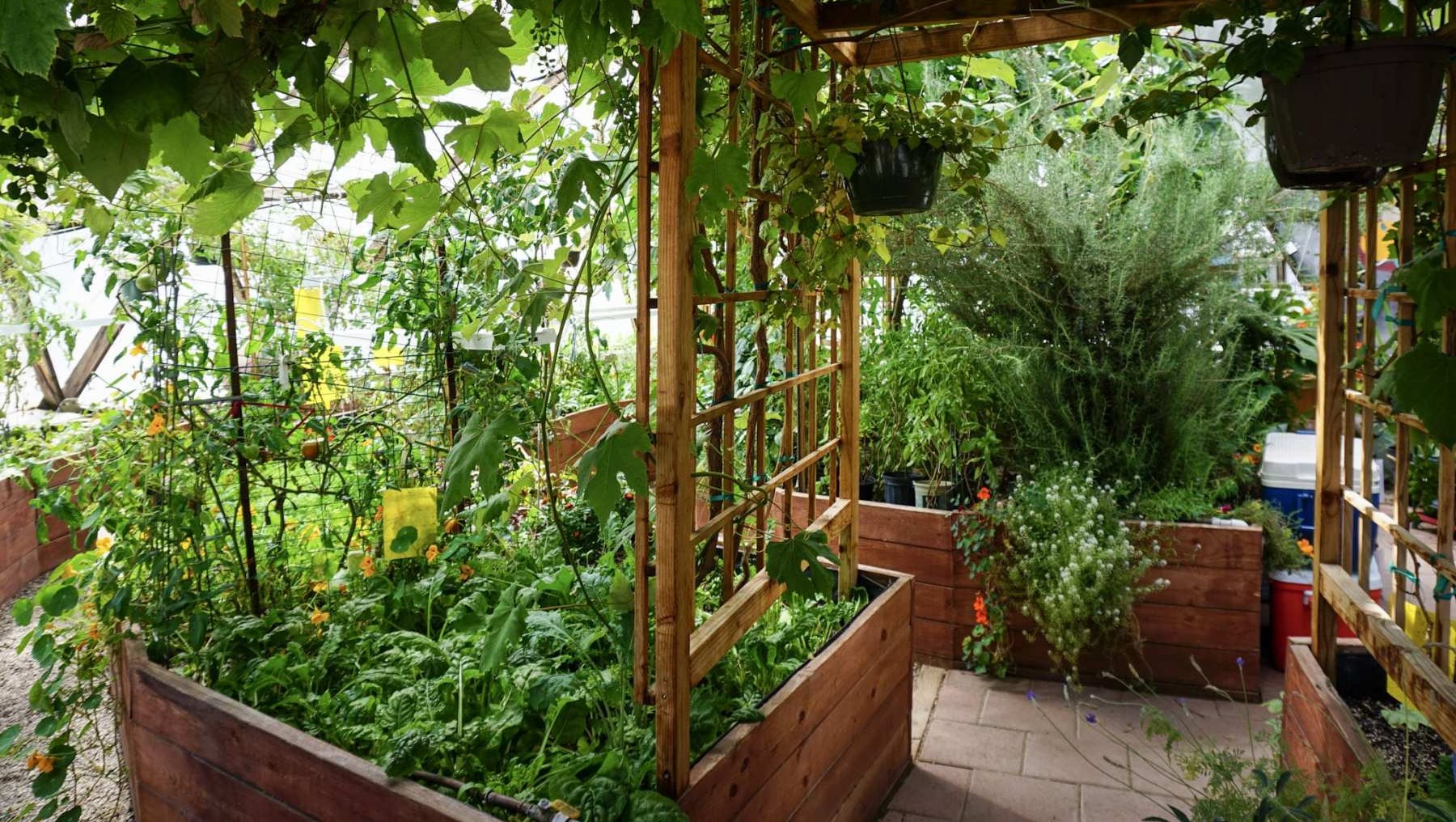
The Transcendence
By integrating your growing space project with the school and the community, the benefits will extend well beyond your ability to keep and grow your staff. You can grow the health of your community as well as teach your students new and valuable skills! From an exploratory colony of three geodesic growing domes, a curriculum of The Three Jewels will yield a bountiful harvest of
• Enhanced Nutrition through greater biodiversity,
• Agri-business technologies and entrepreneurial, career development for students and families, and
• Sustainable, regenerative, waste-management practices for the greater community and the earth.
—–
Full 365 degree Tours of actual Geo Growing Domes in Pagosa Springs, Colorado.
You will be amazed at what Principal Rai and his students will be able to grow and study in their new Growingdome!

“https://my.matterport.com/show/?m=ntwiPmueAYK”
Click the link above and go inside for a look around. ALL Around!
You’re assistance will help make this a reality for the Hillary School in Khumjung and a revolutionary asset for the community just as it has been for the community of Pagosa Springs.
The Why?
Yes. We have a big Why… befitting of the ancient and giant massifs surrounding the school. We see, in a new light, that gaining brothers and sisters raises us onto those insurmountable summits where we are shown how to truly climb. Amidst the myth and magic of the Himal Alaya, even the snow-capped roof of the world no longer serves as the ceiling of possibilities. Why metamorphosizes into YES.

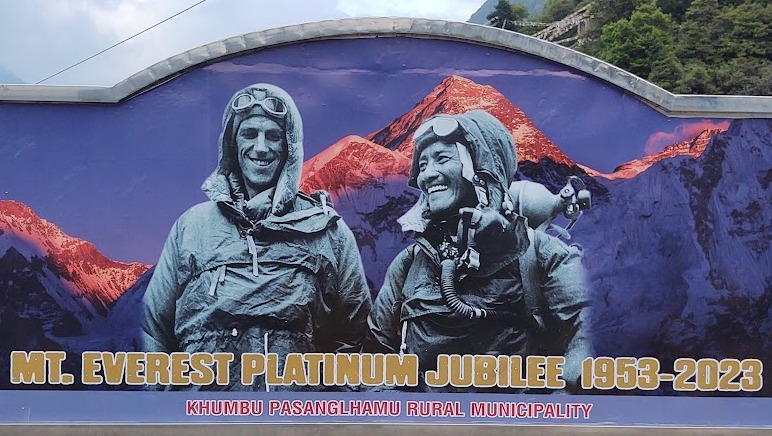
Words, even at their purest, serve only as slivered shadows of true, wordless energy. With this awareness, we humbly climb up on the shoulders of those from the past, present and to come and reach toward greatness. As Sir Edmund Hillary and his Sherpa partner, Tenzing Norgay, hoisted themselves to the peak of the world’s tallest mountain in May of 1953, The words of Gibran’s Prophet were already proclaiming the primal sentiments expanding freely through the collective consciousness of us mere mortals who walk these rocky paths amidst those more mythical.
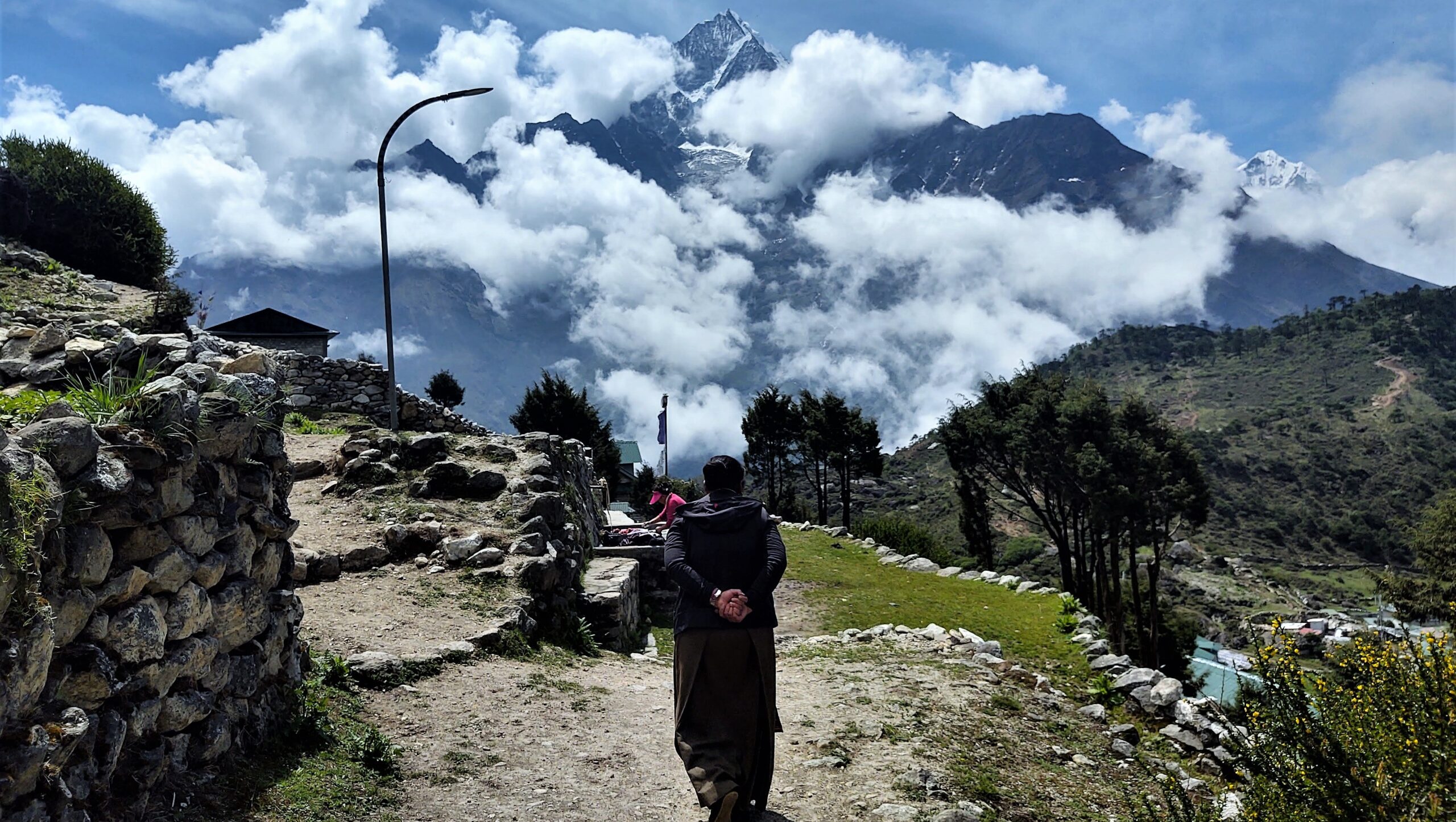
“Wise men have come to you to give you of their wisdom. And undertake of your wisdom. And behold, I have found that which is greater than wisdom. It is a flame spirit in you, ever gathering more of itself. There are no graves here. These mountains and plains are a cradle and a stepping stone. Verily, you often make merry without knowing. Others have come to you. Less than a promise have I given, and yet more generous have you been to me. You have given me a deeper thirsting after life. Surely there is no greater gift… than that which turns all his aims into parching lips and all life into a fountain. And in this lies my honor and my reward. Whenever I come to drink of the living water, it actually drinks me… while I drink it.”
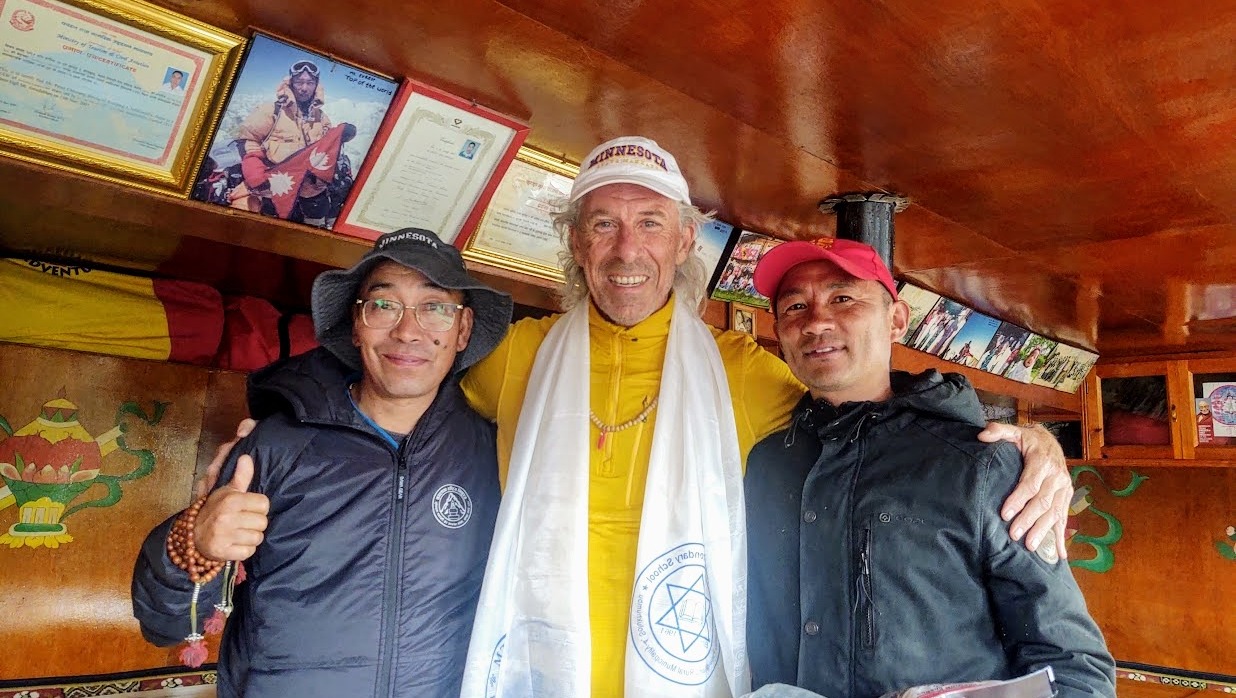
Project Brothers Pema (3 Everest summits), Gary and N.D. (Principal of the Hillary School)
As true and ancient brothers and sisters, we share a deeper thirst and gaiety of spirit so prevalent throughout the Khumbu Valley. And we are blessed to grasp the Why… and strive to quench it, expanding food security, health and Life in an extreme and often hostile environment. The Mission becomes our Why. And Belief circumscribes our Spirit.
Team Sport The foundation has a focused core of three, comprised of Lesley, Susan Michaletz and Lem Tingley. Both Susan and Lem are experienced entrepreneurs and business owners. Susan operates a number of enterprises and lives in the Minneapolis area. Lem is the owner of Growing Spaces, based in Pagosa Springs, CO and the supplier of the geodesic growing dome technology. He resides in the Denver area. Pema Chhosang is the owner of the Valley View Lodge and lives in Khumjung Village, Nepal. He is the Co-Executive Director of the foundation alongside Lesley. As a Sherpa Community elder and schoolboard member, Pema assures the team of its commitments to cultural sensitivity. Through his close relationship with principal Rai, alignment of the project with the school’s goals for the growingdome will remain in focus. Pema also has formal training in all facets of construction and will over-see the building and maintenance of the growingdome at the school.
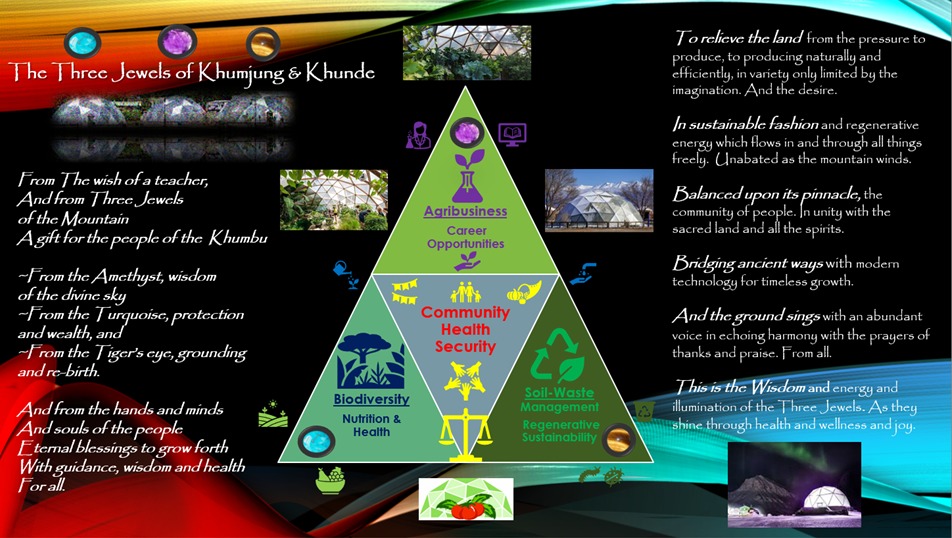
The Vision We see healthy, food-secure communities of Khumjung Village and Khunde benefitting from an integrated agriculture approach, consistent with their indigenous culture, Buddhist practices and effective fusion of progressive technology. Serving as a model for other, indigenous, mountain communities across the Himalayas, The Three Jewels approach to enlightened lives and lifestyle incorporates an inclusive, regenerative philosophy intended to serve the entire culture and traditional community, with compassion and human agency.
The Mission To provide improved nutrition, health, and food security for the Khumjung-Khunde communities through a wider variety of locally produced fruits and vegetables. This will be accomplished through both the Hillary School and the community’s execution of the Strategic Objectives.
Strategic Objectives Through the use of off-grid-capable, next-generation geodesic growing domes, a productive, virtuously purposeful climate modification is achievable, effectively extending the length of the growing season as well as the micro-environment, and allowing for wider viability of new crop varieties and improved yields.
Execution of the Mission will flow from a 3-Part program. Referred to as The Three Jewels of Abundance, this includes emphasis, through knowledge and practice, in the following areas: 1. Biodiversity 2. Agribusiness, and 3. Sustainable-Regenerative Practices
Stakeholders will include Hillary school staff, students, and spiritual and community members. And we’re going to build them, together, with a great team, starting with Dome #1.
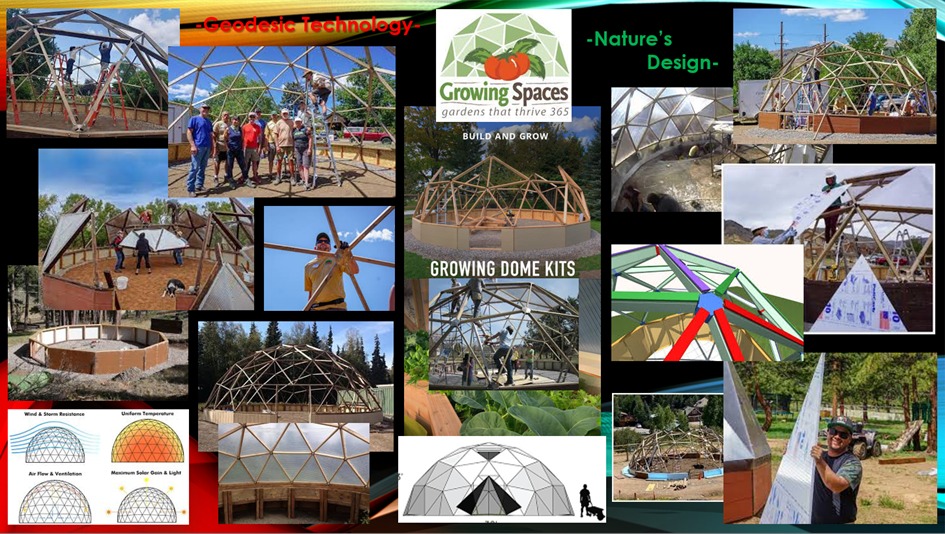
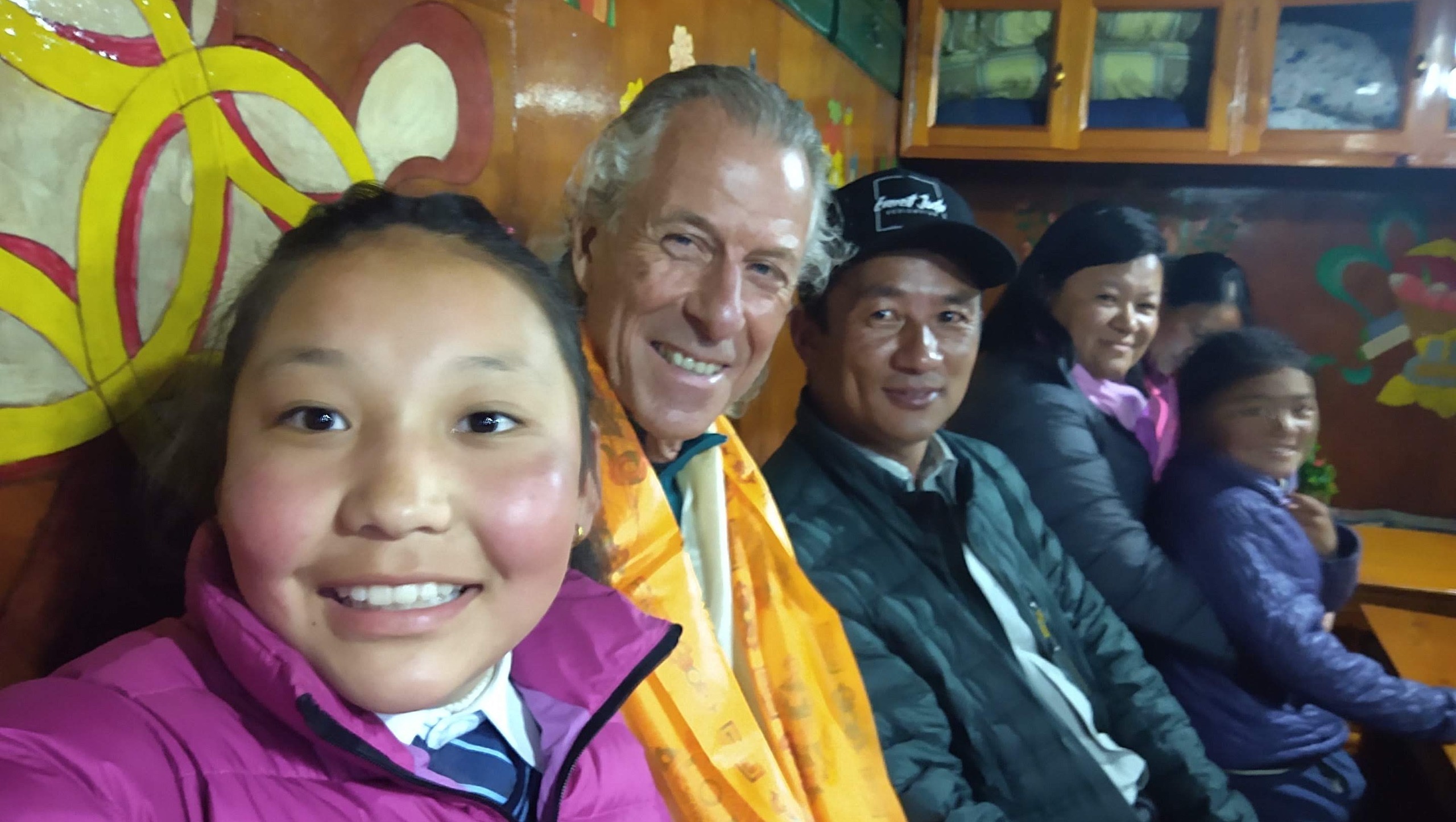
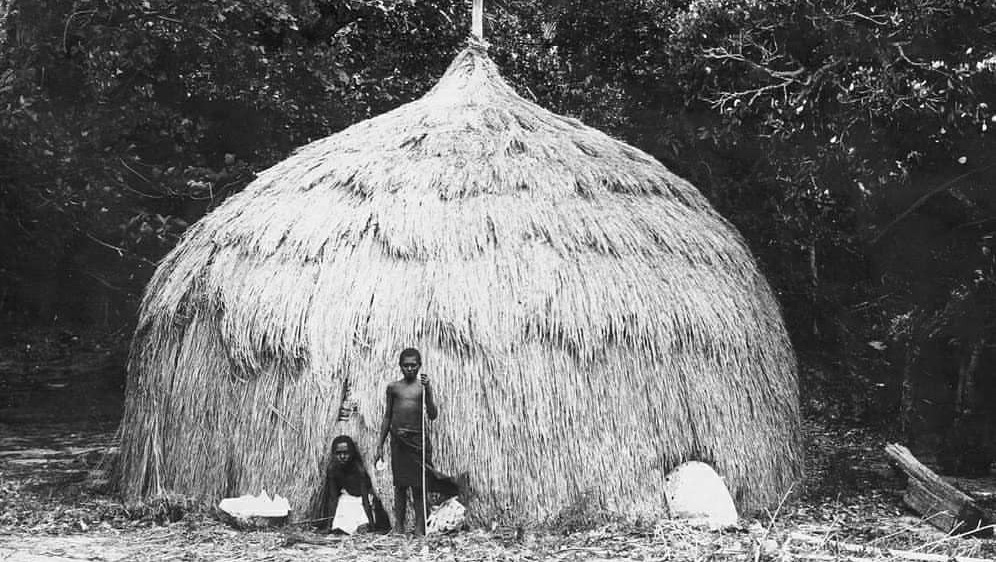
For nearly 2,000 years, Indigenous cultures have used dome design in their architecture as a way to create impressive and visually striking structures that were also functional and practical. One of the most famous examples of an ancient dome is the Pantheon in Rome, which was built in the 2nd century AD and is still standing today. Such designs allowed for the creation of large, open, interior spaces that could be used for a variety of purposes.
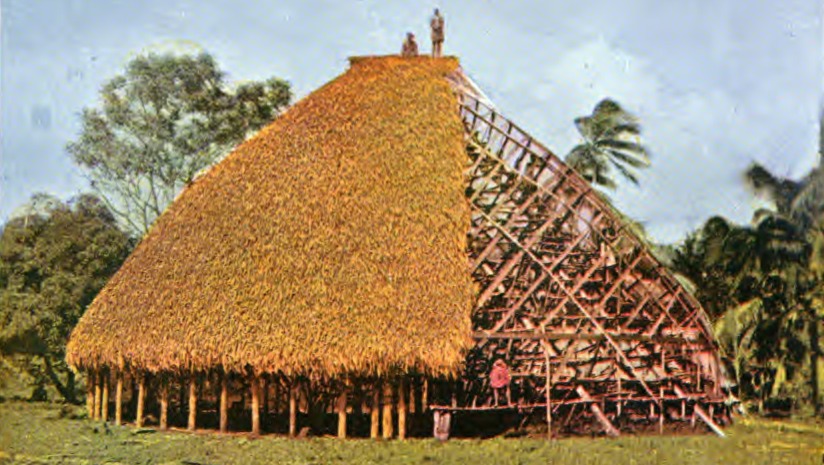
Geodesic domes are a type of structure designed to be strong and efficient, using a series of interconnected triangles to form a dome shape. These structures were effectively developed and promoted in the 1950s by engineer and architect Buckminster Fuller, and have since been used for a variety of purposes, including as homes, greenhouses, and exhibition spaces.
One of the key benefits of geodesic domes is their ability to span large distances without the need for intermediate support. This makes them ideal for use in areas where traditional construction methods may be impractical or too costly. Additionally, the use of triangles allows for a more efficient distribution of stress, making geodesic domes highly resistant to wind and earthquakes.
Geodesic domes are also known for their energy efficiency, as the dome shape allows for a more consistent internal temperature. This makes them well-suited for use in areas with extreme temperatures, and they have been used in both hot and cold climates to create a comfortable environment.
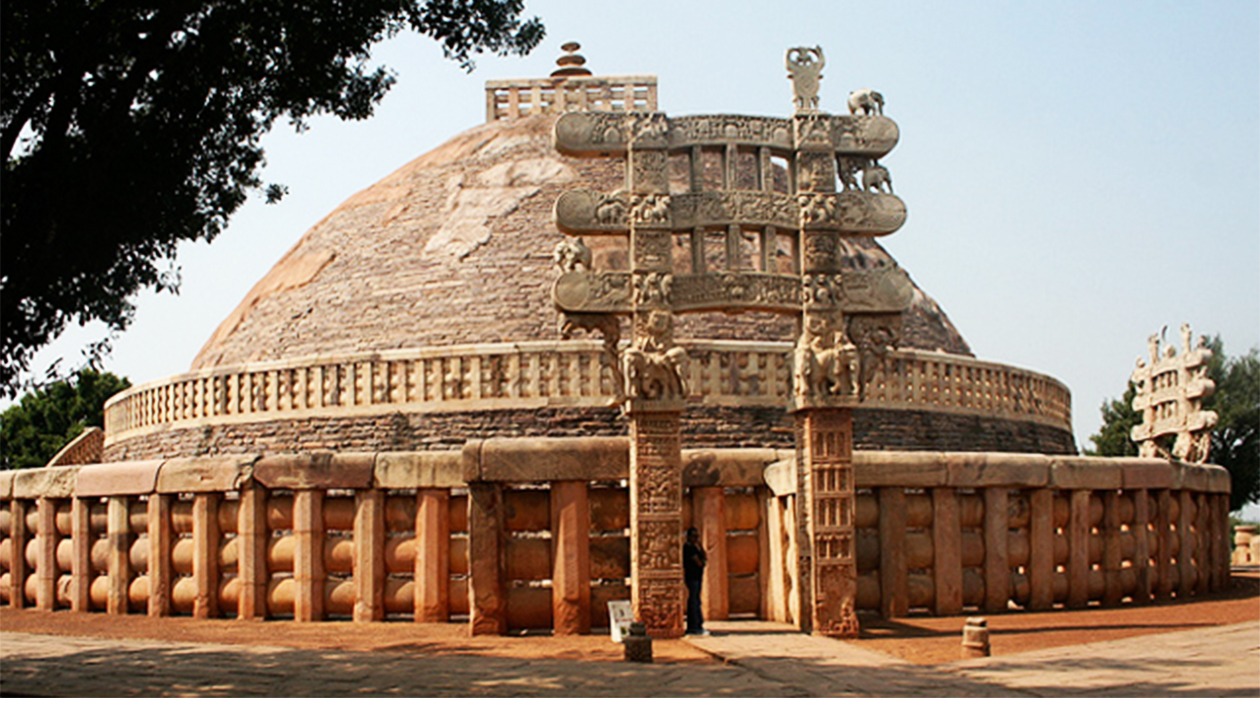
Advancements in technology have made it easier and more cost-effective to build geodesic domes, and there has been a resurgence of interest in these structures in recent years.
In addition to their practical uses, geodesic domes have a strong aesthetic appeal and have been used to create unique and eye-catching architectural designs. They have been used in a range of settings, from residential to commercial, from Disneyworld to the base of Everest, and their versatility and efficiency make them an attractive option for those looking to build sustainably and cost-effectively.
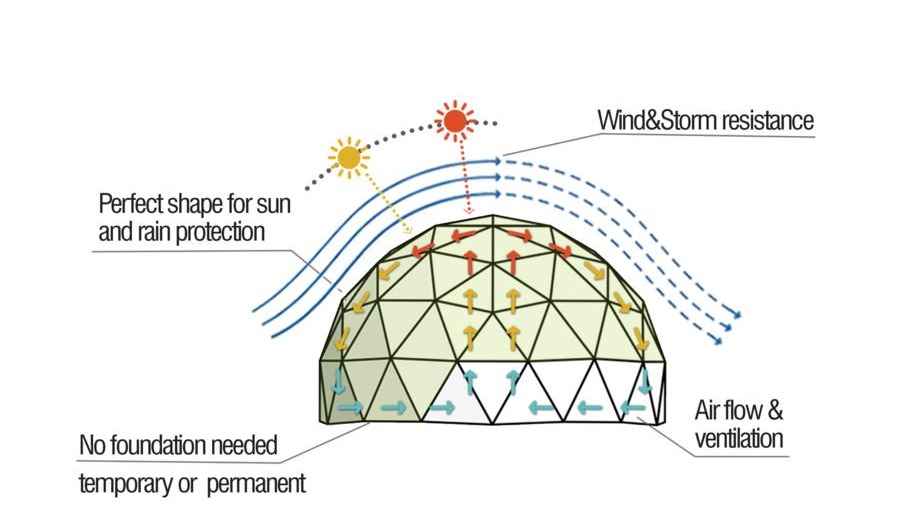
Overall, geodesic domes with solar energy are an innovative and scalable solution to the challenges of building in a variety of environments. While they may not be the most common type of structure, they offer a range of benefits that make them ideal for building a reasonably simple, next-generation, growing space structure in an eco-friendly and cost-efficient manner.
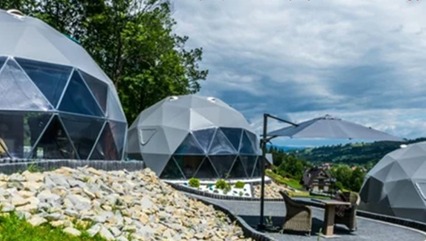
Proceeding with the wishes and dreams of the Community and their Culture is a critical objective.

-Born with a need to climb… and smile… with no fear.
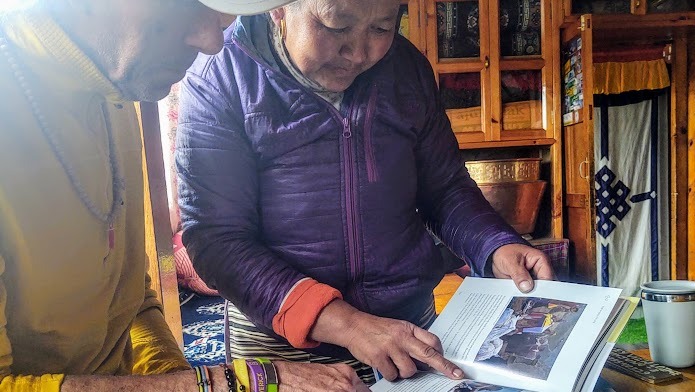
-Sharing photos with Doma, the wife of Pema; Sherpa owners of the Valley View Lodge and life-long residents of Khumjung. Their home lends a place of comfort for me… and always a history lesson from every book I bring. Both Doma and Pema have lived so much of it.
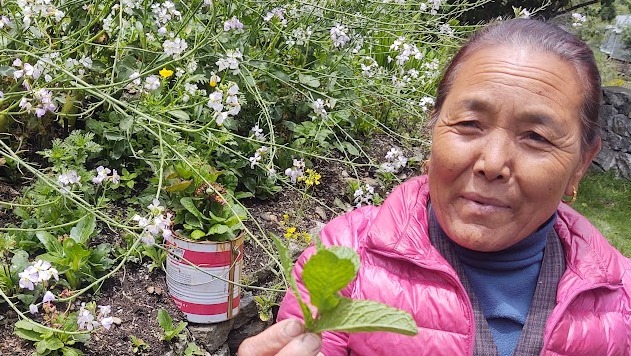
This Sherpa woman and co- owner of a small tea lodge was a lifesaver for me on a trekking day up to Khumjung. The fresh mint tea she prepared for me; actually three cups of it, with a dash of sugar and salt, helped arrest the explosive convulsions that make for the worst nightmare one can imagine on the trail. Tuchay-tuchay sister!

And I know you and we have right intention so I am more than 100% sure that the Hillary School and community of Khumbu will have a new technology for their betterment.
-N.D. Rai to G.Lesley in letter dated 06-12-2023
Throughout my discussions with Principal Rai, the community leaders and the school commission directors, I have been consistently adamant regarding the origination of the greenhouse premise. (We actually do not use the term greenhouse any longer as it connotes a rather stigmatized and rudimentary image of patched, plastic sheeting and shaky wood posts.) It was your idea, N.D.! We police ourselves with the terms we use and he smiles every time I remind him of the simple but critical fact regarding the origination of this initiative.
The general objectives and goals of what N.D. is attempting to accomplish through the geodesic growing dome project preceded any conversations and assignments he gave me. This became reassuringly evident after the chairman of the Khumjung School Management Committee, Mr. Laxman Adhikari shared with me a copy of the Ten Year Plan.
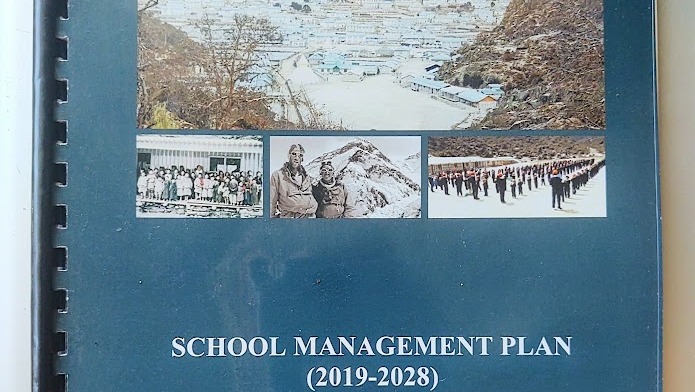
A common thread throughout the plan acknowledged change, technology, economic opportunity and the desire to lead. I was struck by the inclusion of many voices as the exercise of assembling this plan included several Dream sessions, free, open thinking, progressive ideation and a sense of taking responsibility for the future. This plan is not the work of a few but of many. I take great confidence in the strength and commitment of the community spirit so prevalent here. It’s consistent with observations and experience from my past two visits and now underscored by its manifestation apparent in the master plan for the school; in effect, a direct reflection of the community and its situational awareness of the times and how they-are-a-changin’…
-Below: N.D., myself and Chhimi Sherpa; Dir of the Sagarmatha National Park Buffer Zone; and a growingdome project enthusiast.
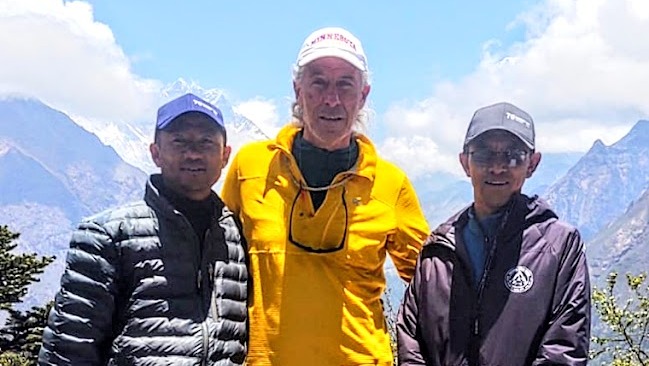
Principal Rai’s initiative has all but been spelled out other than the specifics of the tactic and technique he desires to employ. It’s clear why the growing dome project has met with such great energy, excitement and acceptance. To the right is Chimmi Sherpa; Director of the Sagarmatha National Park Autonomous Region and growingdome project enthusiast.
To be a Hillary High School… in a High place… the challenge and the aim are both very High.
From the Master Plan Objectives: ⦁ Upgrade facilities ⦁ Use of modern teaching-learning methods and technologies, and ⦁ Prepare and implement local curriculum to preserve and promote local language, script and culture.
Shown below are a collection of community members including the Principal, the Chairman of the school board and Pema after discussions regarding the growing dome initiative.
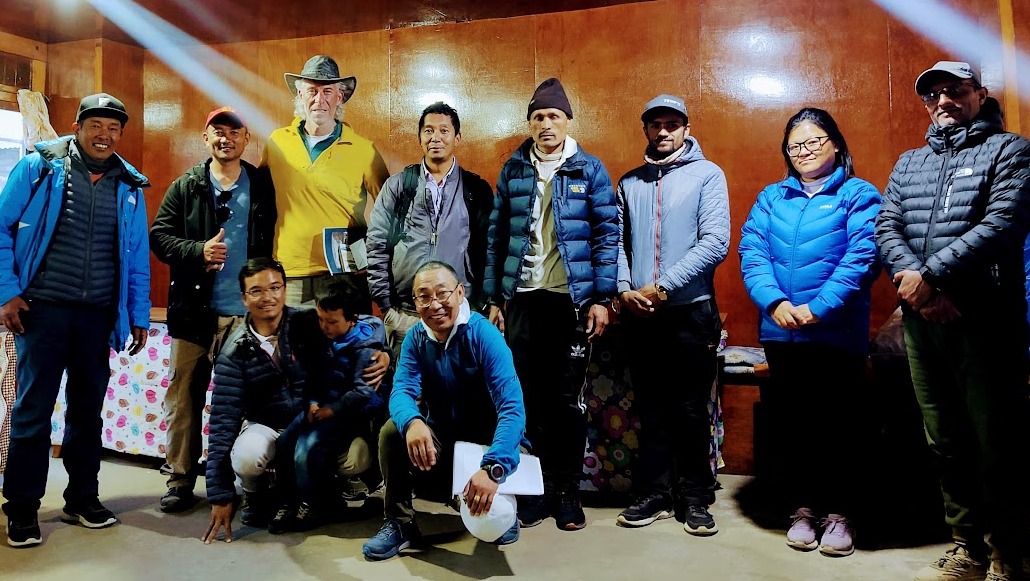
-Below are excerpts from the Master Plan:
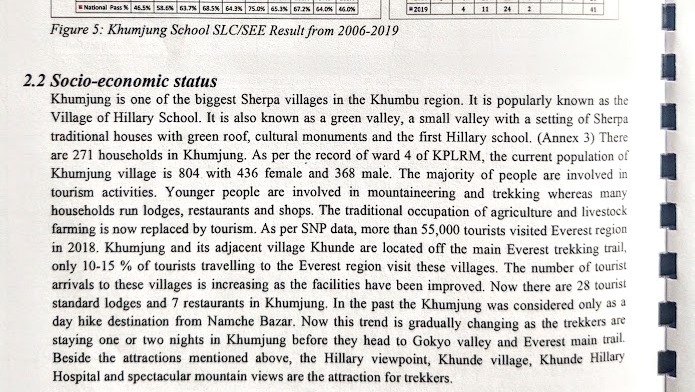
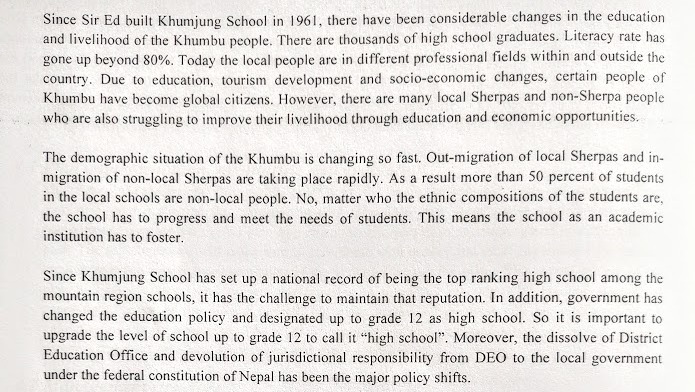
Authorization
Below are correspondences; from Principal Rai and Schoolboard Chairperson Adhikari noting their trust in our team to pursue the Geodesic Growing Dome Project on their behalf and to the best of our abilities.
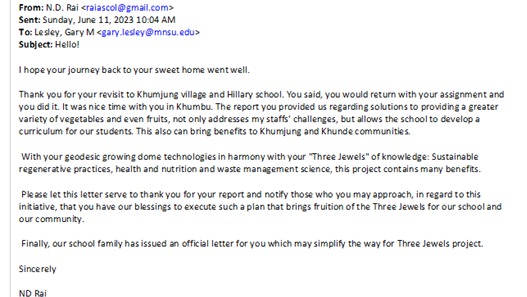
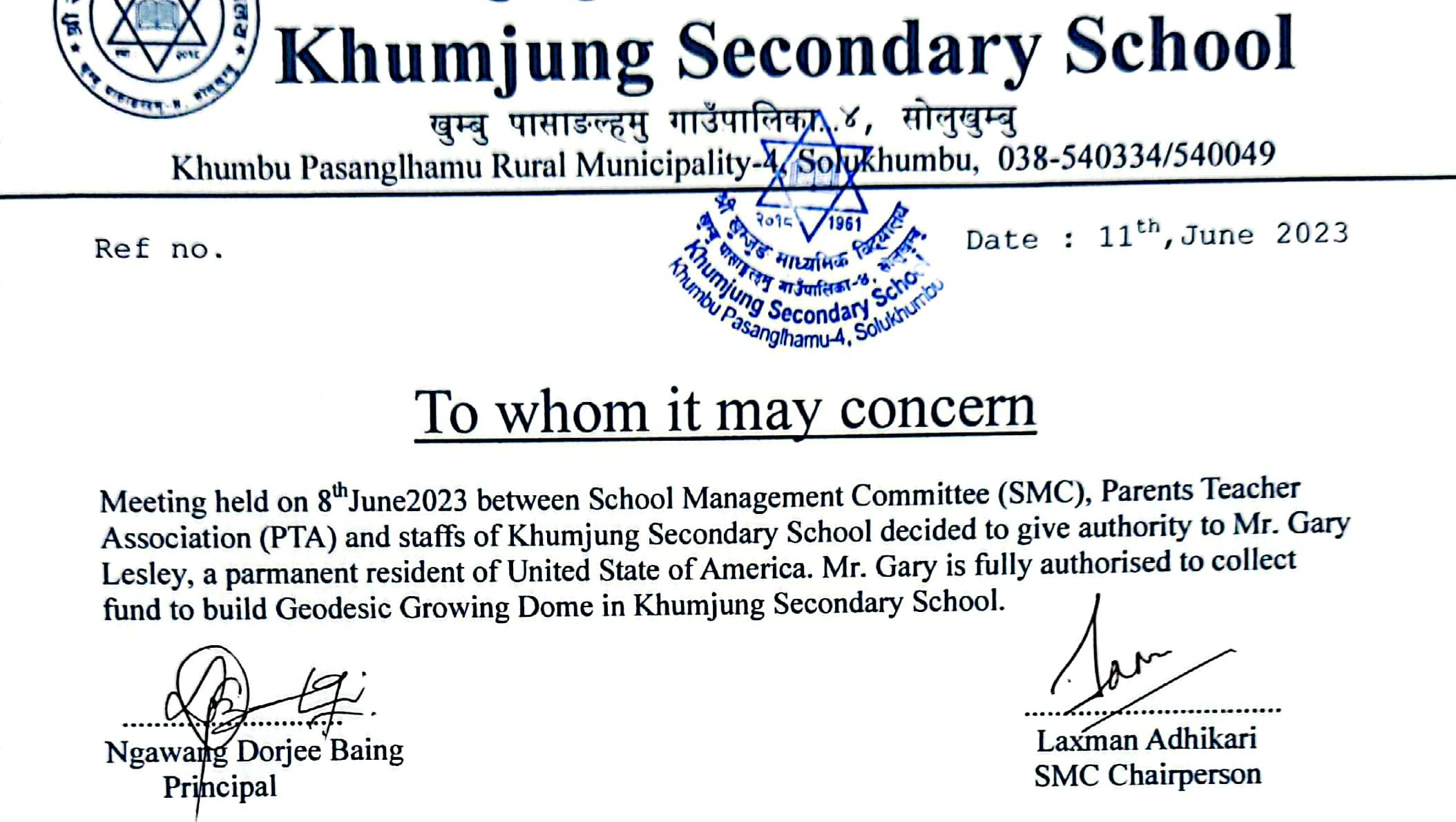
Time Line (We start with the end in sight!)
⦁ Grand Dome Opening: Nov 2024 ⦁ Construction: October 2024 ⦁ Site prep/Fund Raise 100%+: September 2024 ⦁ Delivery: July-August 2024 ⦁ Fund Raise 75% complete: June 2024 ⦁ Fund Raise Start: July 2023 ⦁ Project Go-ahead/Authorization: June 2023
Financial and Accounting Controls
Your contributions through GoFundMe are deposited into a dedicated Hillary School Project account managed by our nonprofit Growingdome in the Clouds Foundation, Inc., a tax-exempt, 501(C)(3) organization registered in the State of Minnesota and monitored by the school board committee in Khumjung. With clear lines of authority to manage funds in conjunction with full transparency, you can be confident your appreciated donations go right to work.
Financial Plan and Budget: Overview
-93% or greater of all funds raised shall go directly into the project. No more than 7% shall be used for administrative and/or fundraising efforts.
Main Cost categories for currently estimated allocations:
1. Geo Dome materials: (Dome #1; 42′ kit from Growing Spaces/U.S.A.) $75,000 2. On site/locally sourced Construction materials: $15,000 3. Planter beds, soil, seeds and internal design/support growing elements: $10,000 4. Assembly and locally provided Construction labor: $15,000 (up to 10 local full-time jobs for 4 weeks at $10/hr.) 5. Transportation costs: $75,000 6. Technical/Supervisory Costs: $25,000 (travel/meals/lodging compensation for 5-7 professionals/3 week tours) 7. Miscellaneous/Administrative Costs (not to exceed 7% of Project Budget)
The project will infuse both directly and indirectly, over $100,000 into the local, Khumbu economy. The multiplier effect of this shall be significant and long-lasting, in addition to the geo growingdome facility.
Growing Spaces Company
This innovative business, located in Pagosa Springs, CO is our Geodesic Growing Dome manufacturer, consultant and partner for our Hillary School Project. Not only are they world-class experts in the design and construction of off-grid, solar-powered, eco-friendly Geodesic Growing domes but they also have accumulated years of successful experience in high-altitude, cold-weather harvesting. We couldn’t have designed a better partner to make this project a reality! Great people, too!
A little from their website:

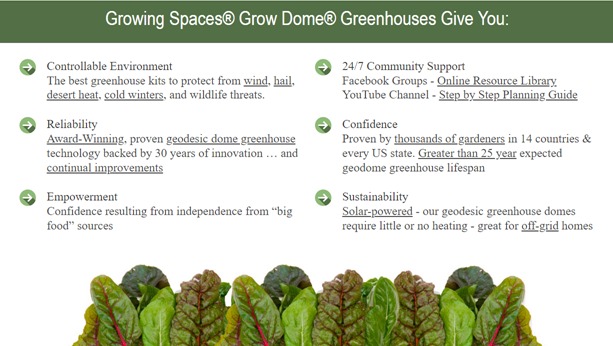
Be sure to visit www.growingspaces.com for a complete description of their business, more virtual tours, success stories and details regarding hundred’s of growing domes across the U.S. and Canada.
Most gardeners feel frustrated by their short growing season. At Growing Spaces, based in Pagosa Springs, Colorado, they believe anyone can have a greenhouse garden where they can sustainably grow clean, healthy food all year round – no matter where they live. They are avid gardeners themselves, living at 7500 ft in an arid climate with only a 90 day growing season! That’s why they’ve created a controlled, sustainable dome greenhouse environment so anyone can easily enjoy their dream garden all year round. Their award-winning geodome greenhouse kits, used by thousands across the globe, provide a reliable ecosystem plants love – and a game-changing, green oasis people love to be in… 24/7 – 365.
Nourishing People – Inspiring Souls
“Yes, I want to help build the Growingdome for the school!”
(Tap GoFundMe below)
Joining our team by supporting this epic mission
with your Donation is greatly appreciated.
Thank you – Tuchay!
-Geo-
Desic-
Sound
-Scape-

